Akira (1988) #1-38
by Kutsuhiro Otomo and presumably a whole bunch of other people
I only read parts of Akira in the 80s. Not because I wasn’t interested, but I missed the start and then I diffidently picked up issues here and there. I think I ended up with a third of the issues before I finally got the rest for this blog thing. And the guy I bought them from even threw in the Akira soundtrack CD, so I listened to that a bit while reading. (It’s not a particularly good album.)
So, here we have Akira, one of the more significant things that Epic Comics published. Other American publishers had published commercial Japanese comics before (most notably Eclipse (with Mai, the Psychic Girl etc) and First (Lone Wolf and Cub), but I think Akira made a bigger splash, even though it wasn’t a trendsetter in how to re-publish Japanese comics in the US. That is, they coloured it.
Steve Oliff (probably my favourite colourist of the 80s) was tapped by Otomo himself, allegedly, and make complete sense. However… the first few issues are rather dark.
I assume that everybody’s read Akira, so I’m not going to talk about the storyline much. I think. Unless I can’t help myself.
One thing I did not remember at all from when I read bits of Akira in the 80s was how much our (later) heroes were straight up assholes. They’re all rebel-without-a-clue-ing around Neo Tokyo, causing trouble. “What have we got to lose?” one miscreant says, rather conveniently for character development.
We get a history of how Akira was originally published, and they keep saying the entire series is 1800 pages. But the Akira comic book wasn’t finished when Epic started publishing it, and it ends up being (* 58 38) => 2204 or something, so I guess Otomo kept adding stuff to it. (He took a break from the comic to make a movie version, somewhat unusually. (Not that making a movie version is unusual, but not completing the comic first is, kinda.))
Did I mention how much of an asshole Kaneda (perhaps intended as the audience viewpoint character) is? And that popped collar. So rebellious.
The characters are kept pretty “real”, and there’s very few of these slightly more deformed reaction shots. And I had also forgotten how much humour there is in Akira.
There’s about six to eight pages of non-Akira stuff in each issue, and you’d think they’d spend more of those pages to showing some more non-Akira Otomo artwork, but… they don’t. You only get a smattering.
Gross.
Military intelligence.
Reading Akira, it feels very well-structured. You have a few issues to set up the characters in their normal environment, and then hell breaks loose and the next… twelve? issues are a constant rush of action, taking place over a single day, with several competing factions with different motives trying to active different objectives. It’s exhilarating. It’s very much a group comic, and all these characters are brought into the action in a way that feels very natural, without infodumping or anything.
Which is what makes panels like this so … odd. We otherwise basically get no explanations for anything outside of character interaction, but then they felt the need to explain what 0K is? Very odd.
Characters’ motivations are usually weak, nonexistent or just unexplained in Akira, and that’s really the main problem with the plot. OK, Tetsuo is an asshole, but when somebody suggests to Kaneda that they should kill him, he’s just YES LET”S KILL HIM, somewhat out of the blue. This pretty much goes for about half the characters: We never learn why they’re in the story. (The military’s motivations are easy enough to decode.)
Oliff’s colouring is really beyond the call of duty. It must have been so much work.
But speaking of work: Everything about this Epic edition is really top notch, from the format (“prestige” square bound), to the perfect matte paper stock, to the covers and the back covers. These books feel good to read. It’s all so… classy.
Otomo (and presumably his studio of assistants) are really up on effective storytelling on a panel to panel basis. They’re able to do some pretty exciting, complex stuff without slowing down the action.
By the sixth issue, they’re listing the “Olyoptics Computer Crew” as being part of the colouring crew.
Speaking of credits: The word “Marvel” isn’t mentioned anywhere in these pages. Even “Epic Comics” is claimed to be a trademark of EPIC COMICS, which wasn’t a separate company, as far as I can tell. I wonder whether this was something Kodansha insisted upon?
There’s a lot of slapstick in Akira.
Akira is somewhat unusual (for its era and genre; i.e., comics for boys) of having to many important female characters. The most kick-ass physical fighter of them all, for instance, is Chiyoko there, but Kay (also above) may be the character who’s present on more pages than any other character. However: You can count the number of scenes where two women talk to each other on two hands, and the number of scenes where they talk to each other about something other than the male characters on a couple of fingers. (You get to choose which ones.) So it passes the Bechdel test, but only barely, which is pretty amazing for a 2200 page comic.
Speaking of motivations: I never, ever got what that dude’s thing was. He’s really the main villain of the piece, and he just… turns up, being all villainy and stuff. And always in a suit and tie, so perhaps he’s symbolic.
I may have neglected to mention that Akira is 35% explosions.
We get a handful of pages in this style. I’m guessing these were the first pages from an Akira collection? They sometimes do those in colour in Japan.
An Otomo art book was published around this time, and Epic gives it a shout out. That’s a nice whale.
Then we get one issue that’s coloured using a totally different technique. It looks more painterly, but all the black ink lines look weak and faded.
It’s also the only issue where Gloria Vasquez is listed as doing colouring, so they were experimenting with a different technique? My guess is that it was coloured on proofs and then scanned, lines and all, because that usually results in that washed-out look.
It looks very different, but kinda… good? They reverted to the old method the next issue, so they didn’t like it, I assume.
Oh, yeah, and the plot keeps getting more complicated, with people shifting sides and betraying each other and and and. It’s amazing how well it works: It should be confusing, but instead it just feels like it’s firing on all cylinders.
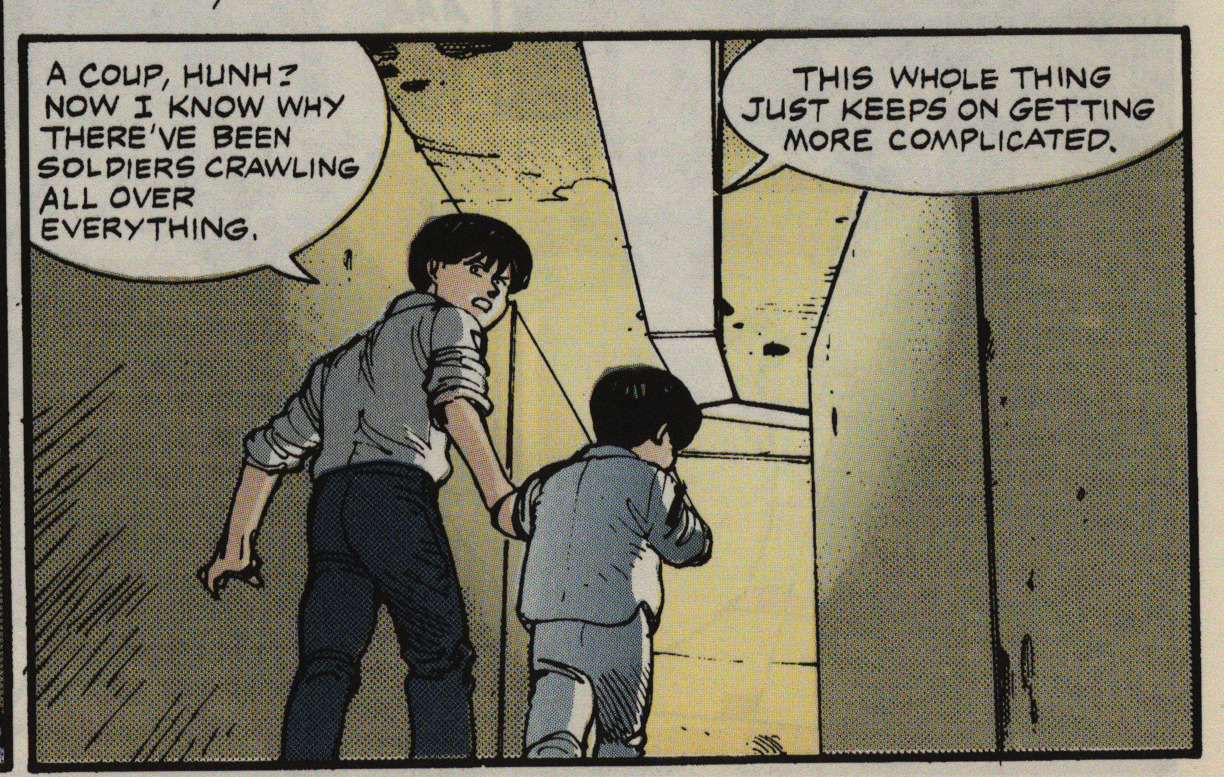
Indeed.
Did I mention that Chiyoko is kick-ass? She’s kick-ass.
After a while, they started padding out I mean running this interesting serial about how the Epic series is produced. I guess they felt the need because it’s more complicated than you might assume.
The Japanese speech balloons have not been reused, so Otomo’s studio have laboriously removed them and added in artwork where they used to be. And then new ones are pasted over the artwork again. It sounds like the entire process requires the artwork being shipped across the Pacific half a dozen times, and that the Otomo studio is very hands-on in all the parts of the process.
Because it’s not just the translation: There’s also the colouring, which is done half on paper and half if the computer.
Well, I think it’s interesting, at least.
Looking at this hefty stack of comics, you may be saying OH WHAT A PRODUCTION ERROR TO MAKE! ONE OF THOSE HAS THE SPINE COLOURS REVERSED!
But no; it’s rather clever. The 16th issue is where the first half of the Akira storyline comes to an end:
And from hereon out, everything changes.
I like those details. They’ve put more thought into the presentation that you’d expect.
After the rupture in the storyline, things take a while to get back up to speed. We’re now in a more cliched Lord or the Flies kind of thing, and whenever a woman shows up, we get pages of attempted rape. It’s just not as fun as the first half was, what with all the intrigue.
Otomo also has to resort to cheap tricks like having a helpful bartender outright explain everything that’s been going on since the mini-apocalypse. It gets the job done, but it’s a bit disappointing.
More info on what they do at Epic.
In a way, the second part of Akira has some structural similarities with the first part. We spend some hundred pages setting up the new status quo, without much development in the plot…
… but just fighting and action stuff before getting going again. It worked better in the first half, I think.
The biggest plot hole (I think) is when she tells Tetsuo all about how to achieve greater power, and explains the history behind all we’ve been reading. She knew he was… er… unstable, and that she’d have to take him down, so why help him? Perhaps I missed something.
Apparently the Akira movie never got full US distribution, but is was showing in select more arty theatres at the time, and Epic listed the screenings.
Let’s take a look at a typical Epic issue of Akira. We first start with the colophon and then AKIRA.
And then we get a varying number of plot recap pages. I think the most I counted was five? But also as little as two. (Well, except at the start, when there was only one.) Epic had a thing about recaps; gotta keep new readers informed about what’s happened before. Perhaps I’m unusual, but I’d rather do just about anything else other than read plot recaps, so this Epic quirk annoys me beyond reason when the recap is done in-story (which is the norm for the non-reprint Epic comics). At least here I can just skip past it. Even if I’d never read a single Akira issue before, and the first issue I bought was issue 22, I wouldn’t have read the recap. But… I guess some people like it?
And that’s fine!
There’s quite a lot of body horror in Akira, which I didn’t expect.
Oh, yeah, you have to have a Kaneda/Tetsuo show-down, but since Otomo just showed that Tetsuo is a super-being with amazing powers, it’s a bit strange to then show Kenada being able to slap Tetsuo around.
And then there’s a two year break before issue 34, and the price went from $4 to $7 for the remaining issues. Was this because they had to wait while Akira finished publishing in Japan?
The artwork has changed significantly during that time. Everything looks more cartoony and less detailed.
The colouring, too, has changed, becoming more sculptured. And darker. Way darker. It’s still Oliff’s studio doing it, though.
Yes, it’s amazing what situations all the main characters managed to survive. OOPS SPOILERS.
And … then in the final two issues, they pad out the pages with these “tributes”. This one is by Mark Texeira and Jo Duffy, and sort of re-tells a scene from one of the earliest issues. The question is… why?
Whu…
OK, that Moebius one is pretty nice.
Oh! Alex Toth! That was unexpected.
ANYWAY!
I was rather worries that Otomo wouldn’t stake the landing of Akira, but it did have a pretty satisfactory ending. I spent three days reading this thing, and it was fun. Would totally recommend, +1, etc. It’s good comics.
But what did the critics think?
Fred Patten writes in Amazing Heroes #187, page 79
Katsuhiro Otomo’s Akira is one of the
best and most original science fiction
novels in comic book form.[…]
The Epic edition of the Japanese
four-volume set ran out with issue
#23. Fans have been wondering what
would happen when Epic caught up
to the end of the Japanese story.
Otomo has reportedly returned to
finish it. Akira #24 is the first evi-
dence that this is true. There is some
confusion as to whether this issue is
actually newly drawn or whether it is
one of a few more 1986 installments
that followed those collected in vol-
ume four which will appear before
Otomo’s first brand-new episode. But
#24 has definitely never been seen by
Akira’s American readers before, and
it is pure Otomo. There is no sign in
the writing or art of a five-year break.
It’s as good as ever.[…]
These
are new complications to the already
complex’ plot revolving around the
factions of normal humans and psy-
chics struggling to control Neo-Tokyo.
Otomo keeps it all clear, intelligent,
and suspenseful.
GRADE: ! ! ! ! 1/2
Jeff Lang writes in Amazing Heroes #154, page 64
Akira #3 begins with a 3-page “what
has gone before” section. It’s indis-
pensable, not because the first two
issues were particularly confusing but
because they were so dense. Weighing
in at 64 pages per issue, Akira should
win some sort of achievement award
if only for the number of readers the
editors get to shell out $3.50 every
month. The question is, of course, is
it worth it?
One has to uonder what was going
through the minds of the editors at
Epic when they decided they wanted
to publish a colorized Japanese comic.
The decision must have been made
when translations of manga such as
Lone Wolf and Cub, Mai the Psychic
Girl, Kamui, and others were cresting
their respective waves. I have a great
deal of respect for Epic’s editor-in-
chief Archie Goodwin, so I will
assume he must have known Akira
would hit the stands sometime after
the fad had lost some steam. In other
words, Mr. Goodwin and company
must have seen something in Akira
that would make it stand apart from
all the other imported Japanese books.
Certainly, the fact that the art would
look good in color had something to
do with it. Ditto the fact that Otomo’s
artwork looks more like American
comic artwork than most manga I’ve
seen. However, I think the thing that
makes Akira marketable to an
American audience—or, at least, a
Marvel audience—is the story.[…]
In tone and in substance, Akira
reminds me of several other works.
First, there’s something marvelously
Hitchcockian in the way all the
characters are running around,
seemingly intent upon tracking down
a specific goal and always treading on
each others’ toes. (Many creators
think they’re being complex when
they’re just being cluttered.) As in
Hitchcock’s best uork, everything that
happens in Akim is clear. We know
who the players are and where they
are going, both physically and meta-
phorically. The artwork is both love
ingly detailed (right down to the decals
on Tetsyo•s motorcycle which is way
cooler than any mecha I’ve ever seen)
and the action is swiftly paced. The
characters are clearly delineated and
believable. The scene were the Col-
onel, ostensibly the villain, shows
both deep concern for and barely-
controlled impatience with a female
version of Number 26 is one of the
most disturbing and moving things[…]
And last, and this is the kicker,
Akira reminds me a lot of 77te X-Men,
which probably explains why it’s
being published by Epic. Epic
obviously saw the potential for a
cross-over audience from Marvel’s X-
titles to the higher-priced Epic books
as well as the possibility of hooking
some of the alternative audience into
the old fold, the revitalized (trans-
lation: post-Shooter) Marvel.[…]
GRADE: VERY FINE
That’s one of the puzzling things about Epic doing Akira: If it was a commercial success, why didn’t they start publishing a bunch of other Japanese comics? If it was a commercial failure, why did they stick with it for seven years, as complicated as the production of it was?
Somebody writes in Amazing Heroes Preview Special #11, page 10
And, before we forget, congrats to.Akira
for winning two Harvey Awards (Best Foreign
Adaptation and Best Colorist) this summer!
Dark Horse has reprinted the series:
Spanning over 2000 pages the Akira series is a sci-fi epic.
But they’re now out of print?:
These volumes were collected by Dark Horse in the 2000s and, since the company’s license lapsed, they’ve been out of print for a few years.
Oh, it’s been republished now:
From an artistic standpoint, Akira is a masterpiece. I found myself so totally
drawn into the pages, hence the storyline, it was somewhat alarming.
Oliff’s work on AKIRA earned him a Wil Eisner Award in 1992, one of the U.S. comics industry’s highest honors, and he continues to work in the comics profession today.

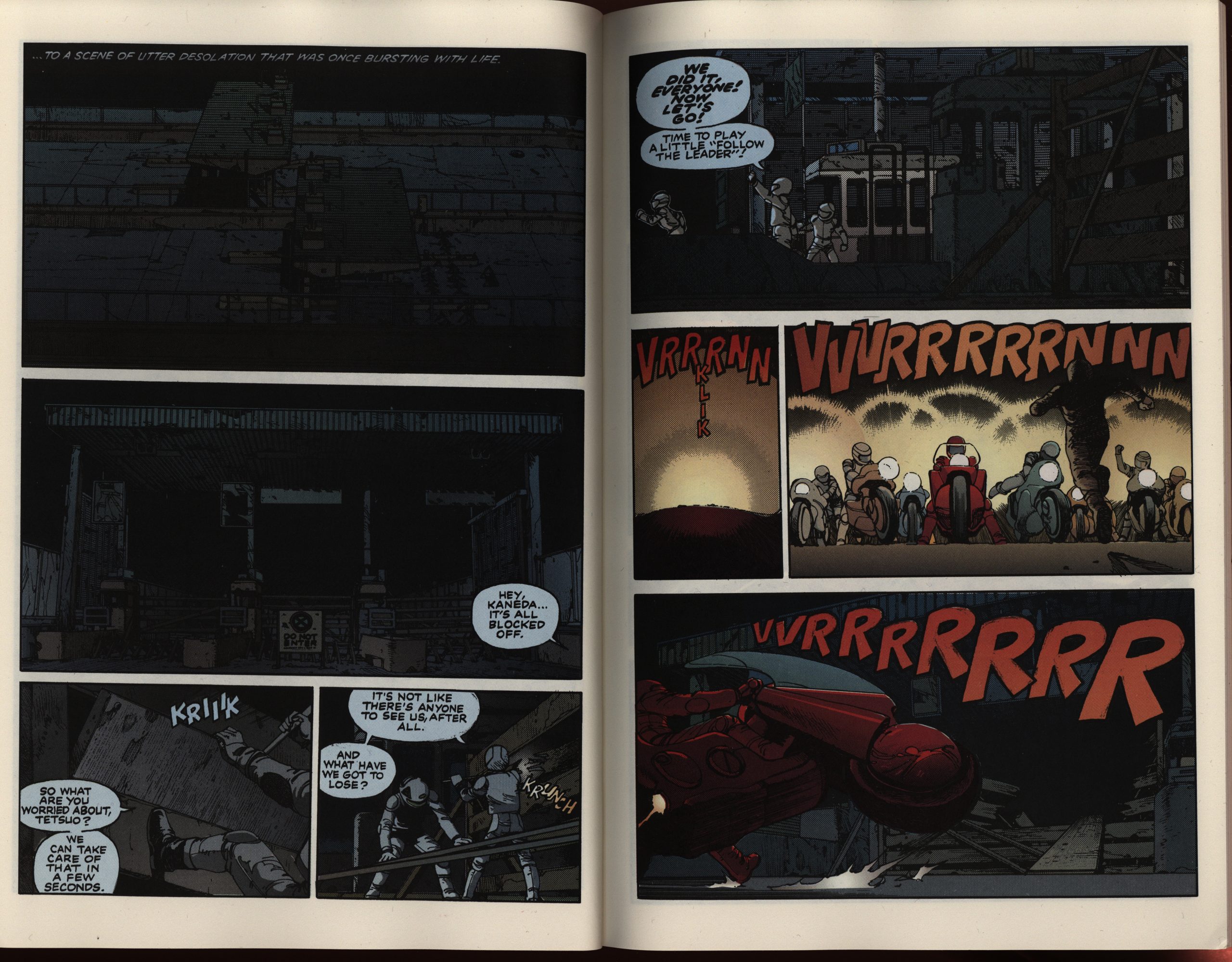
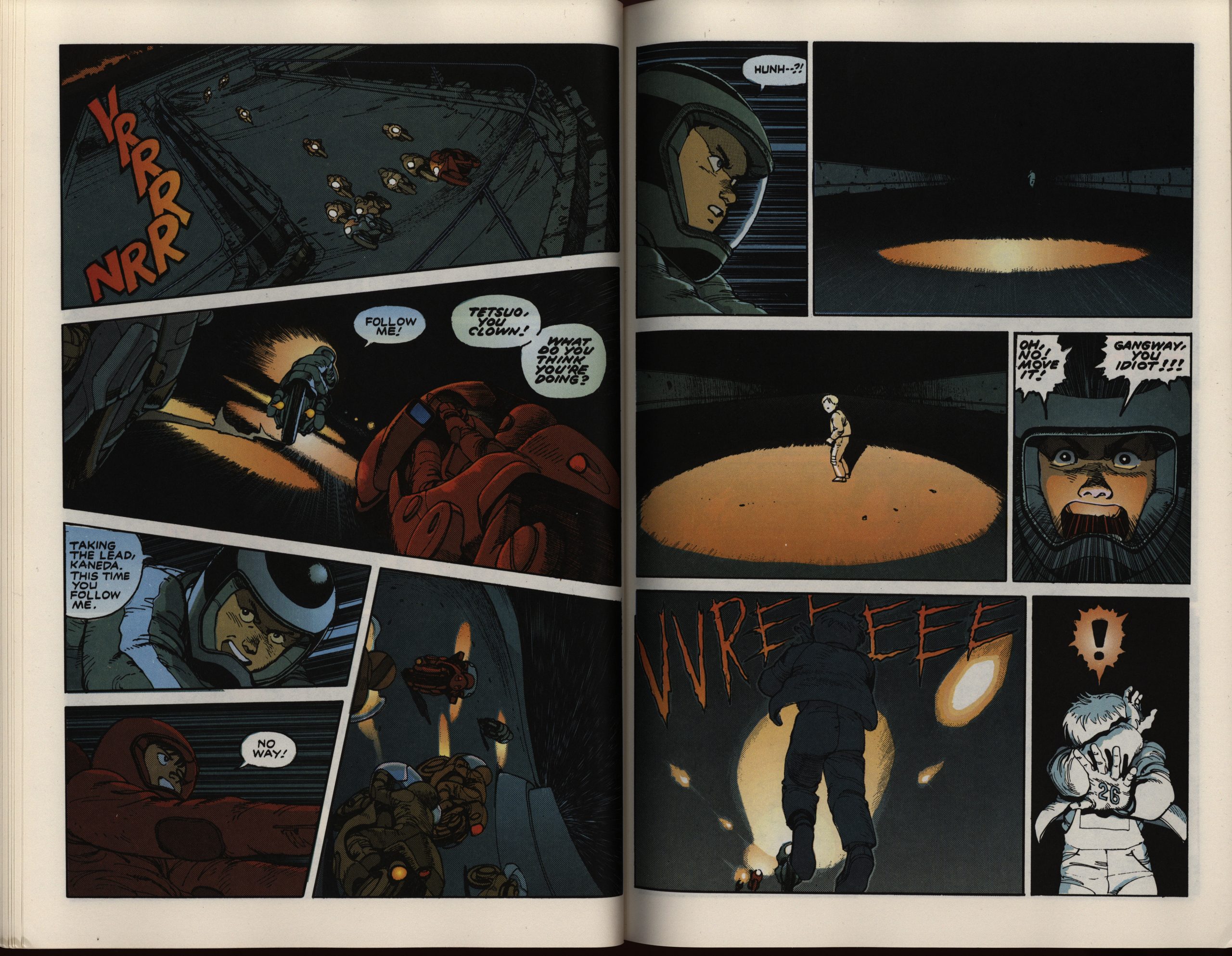
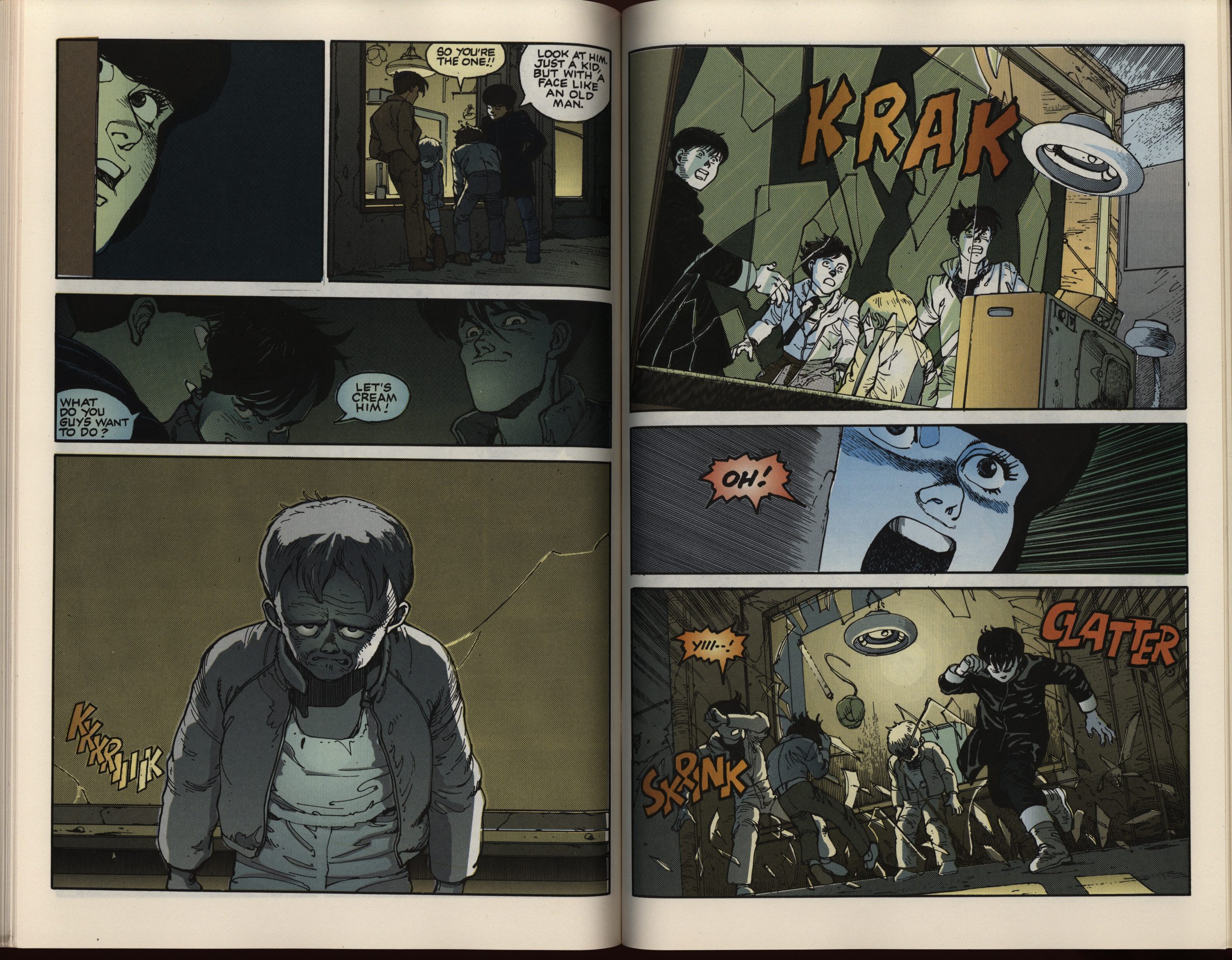
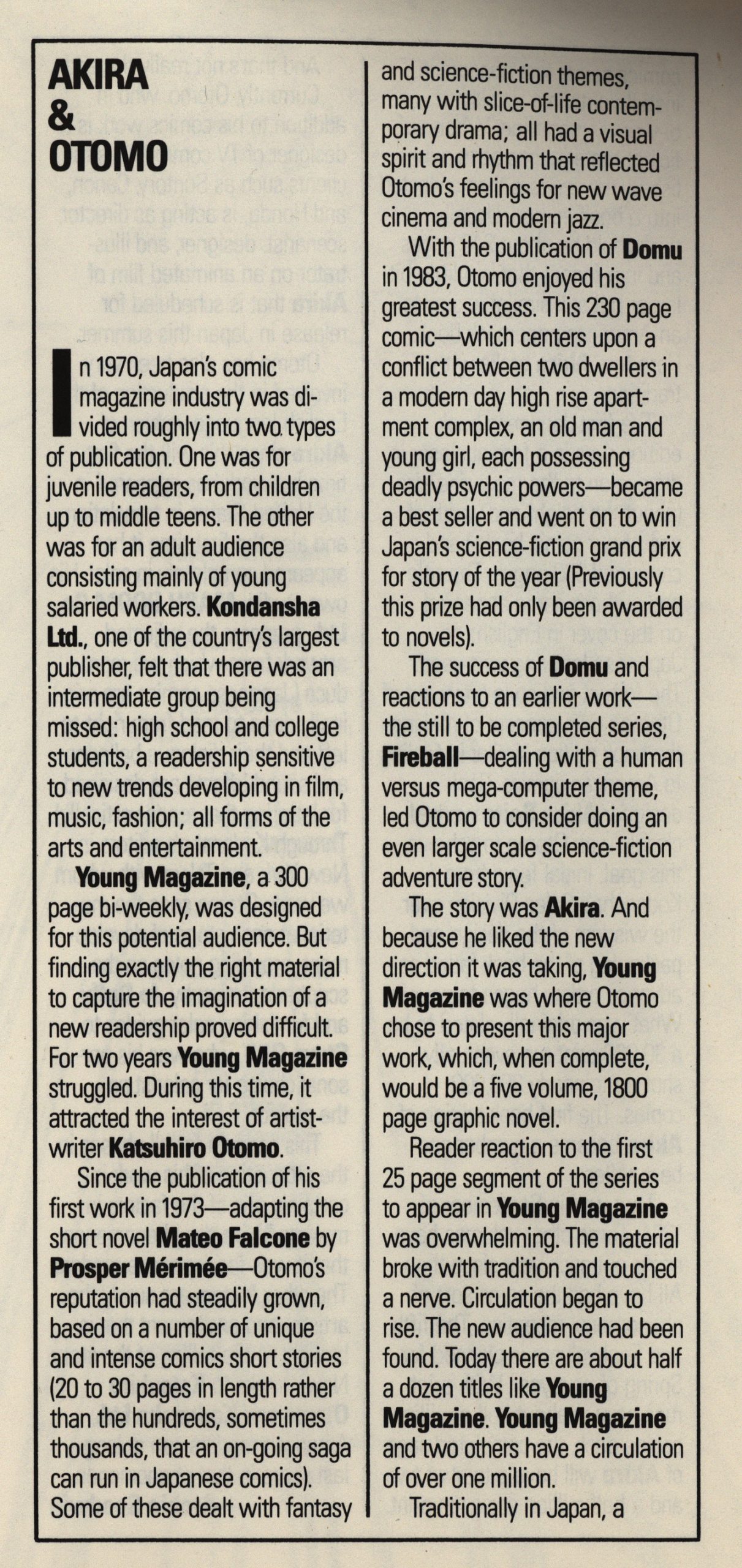

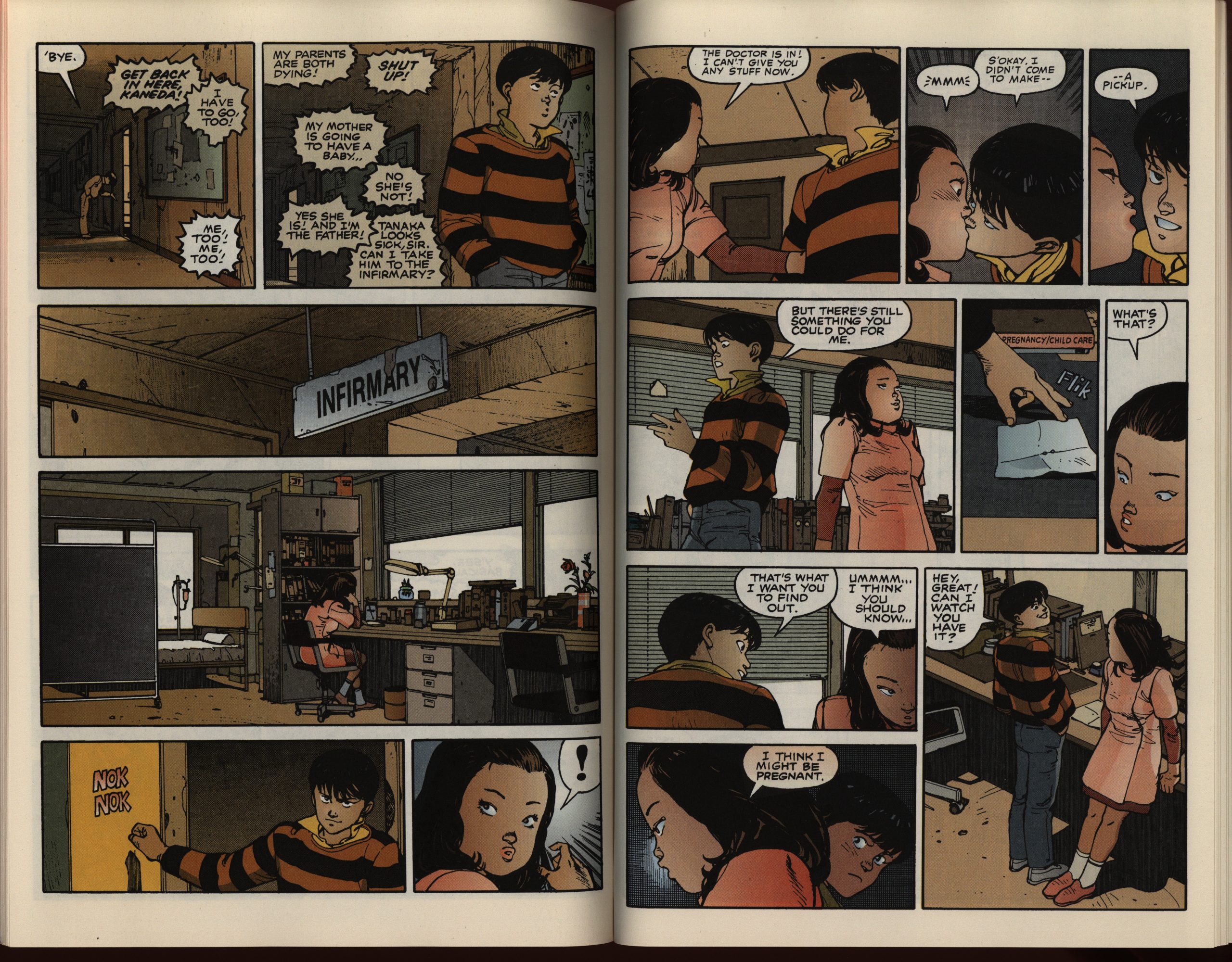
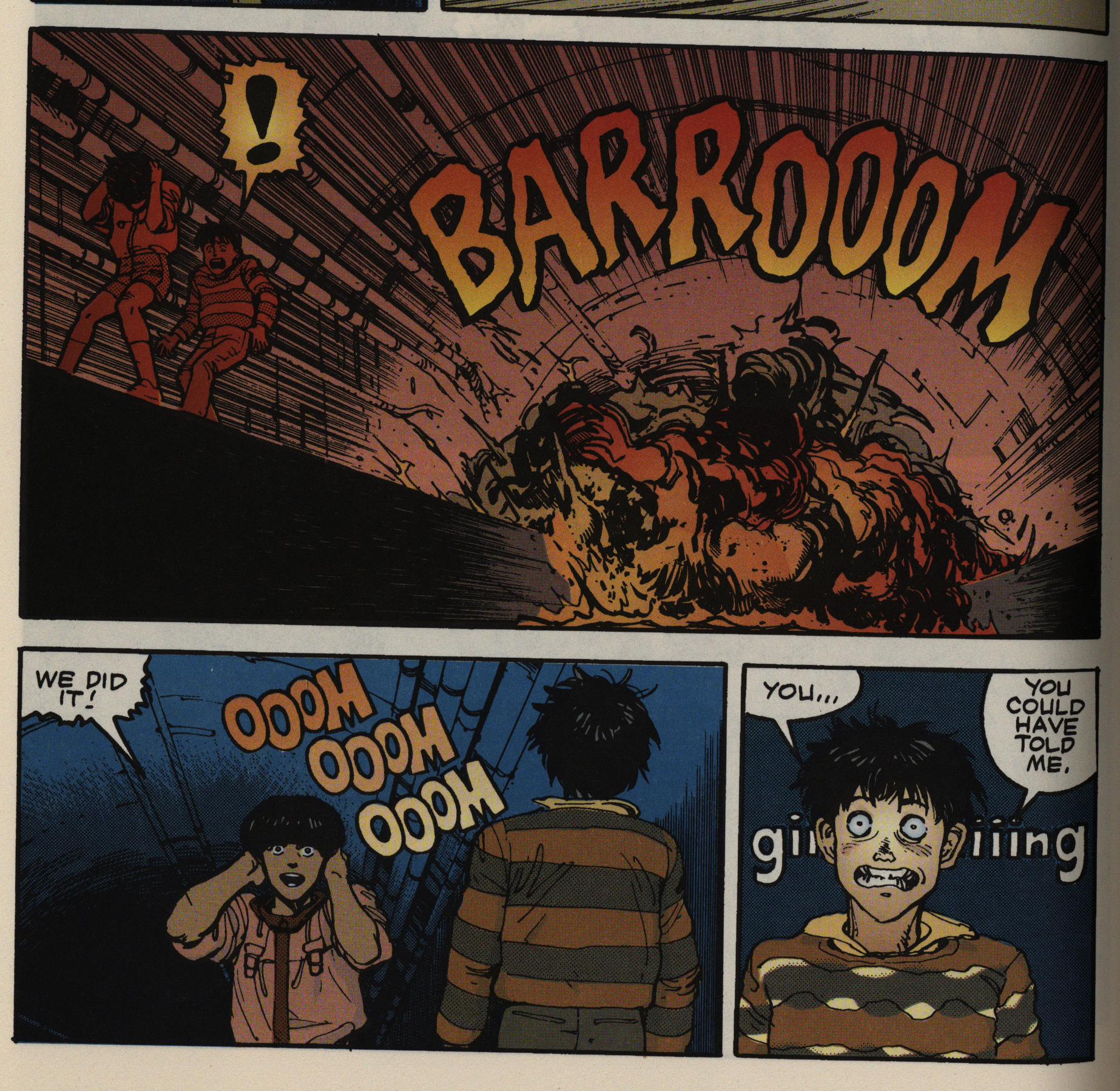
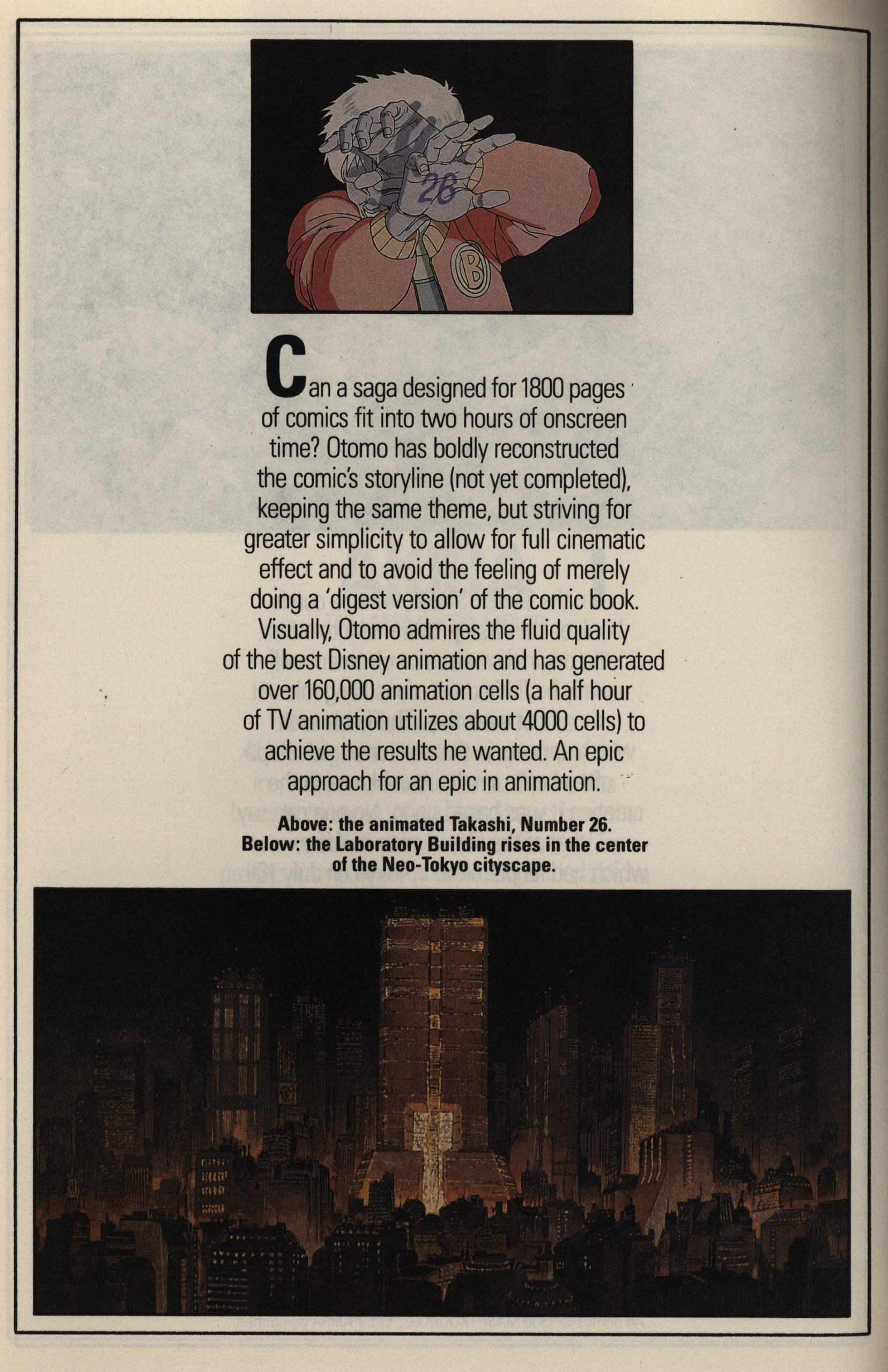
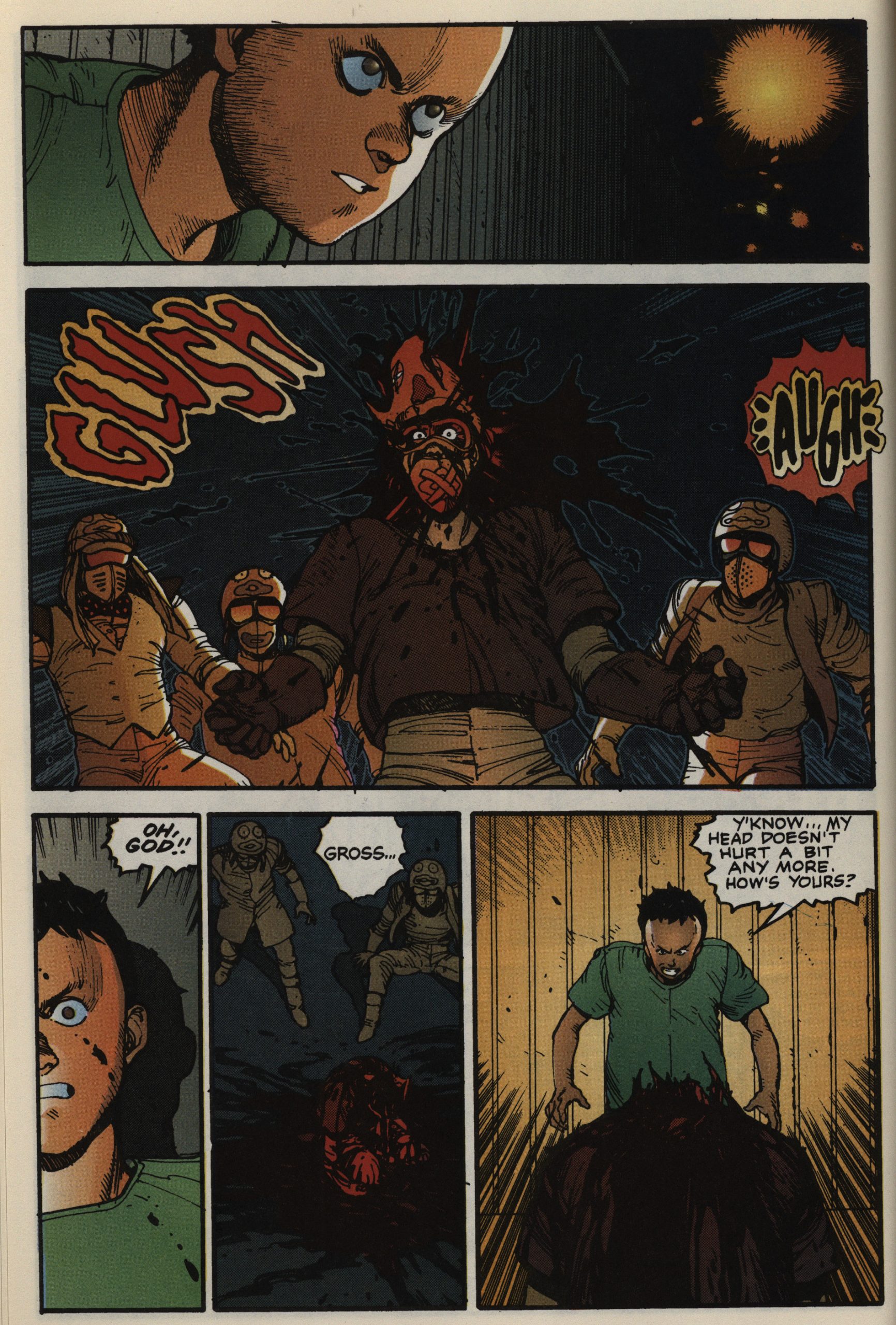
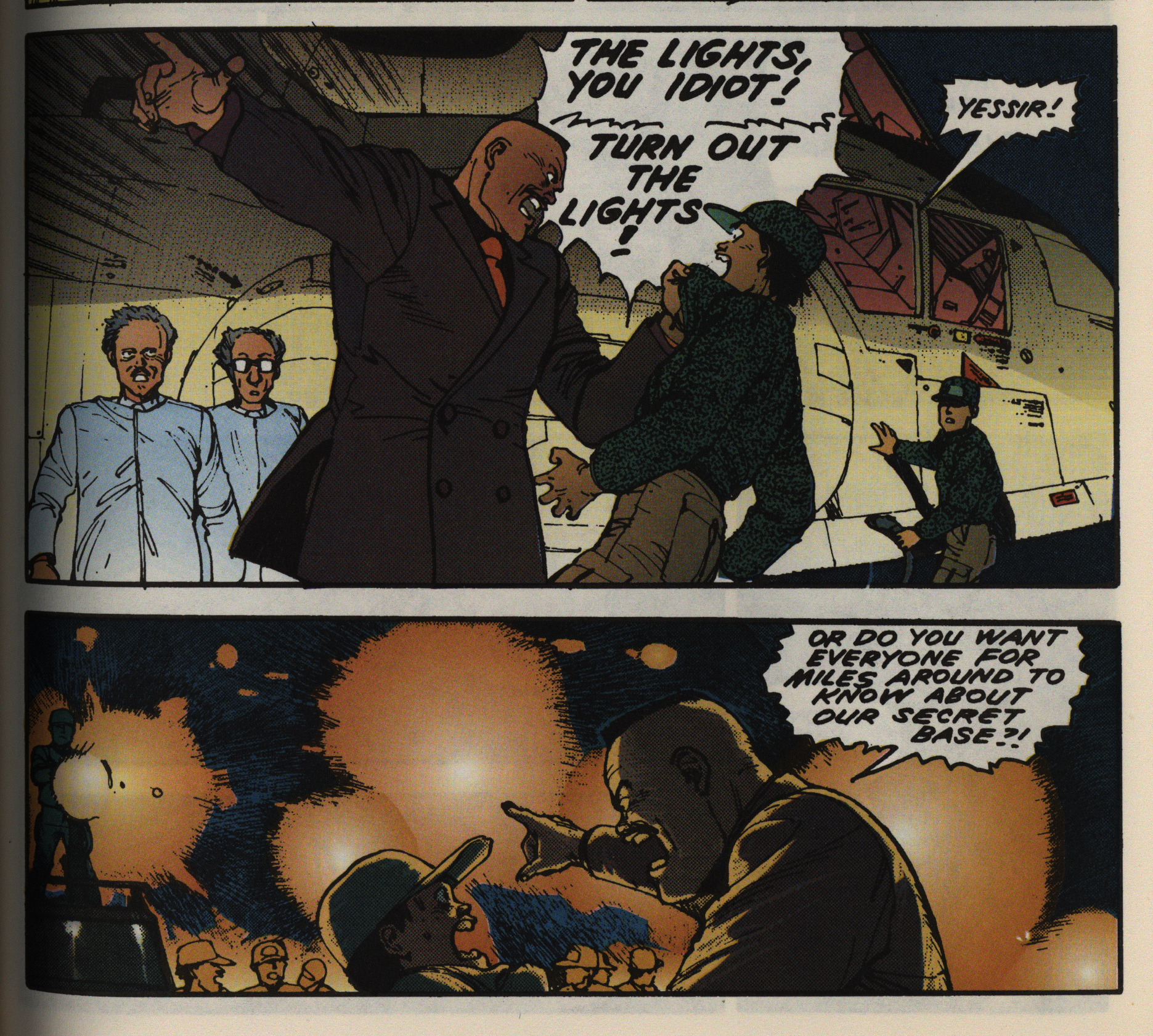
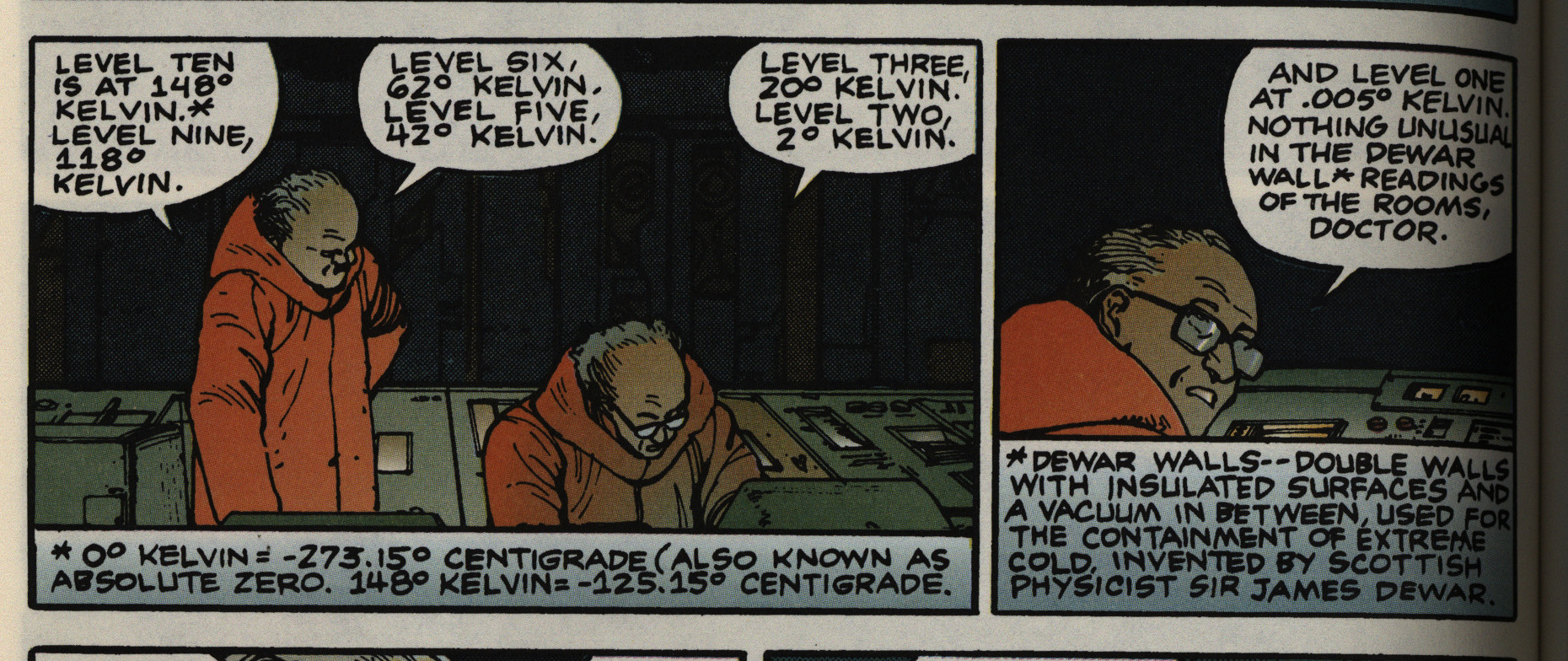
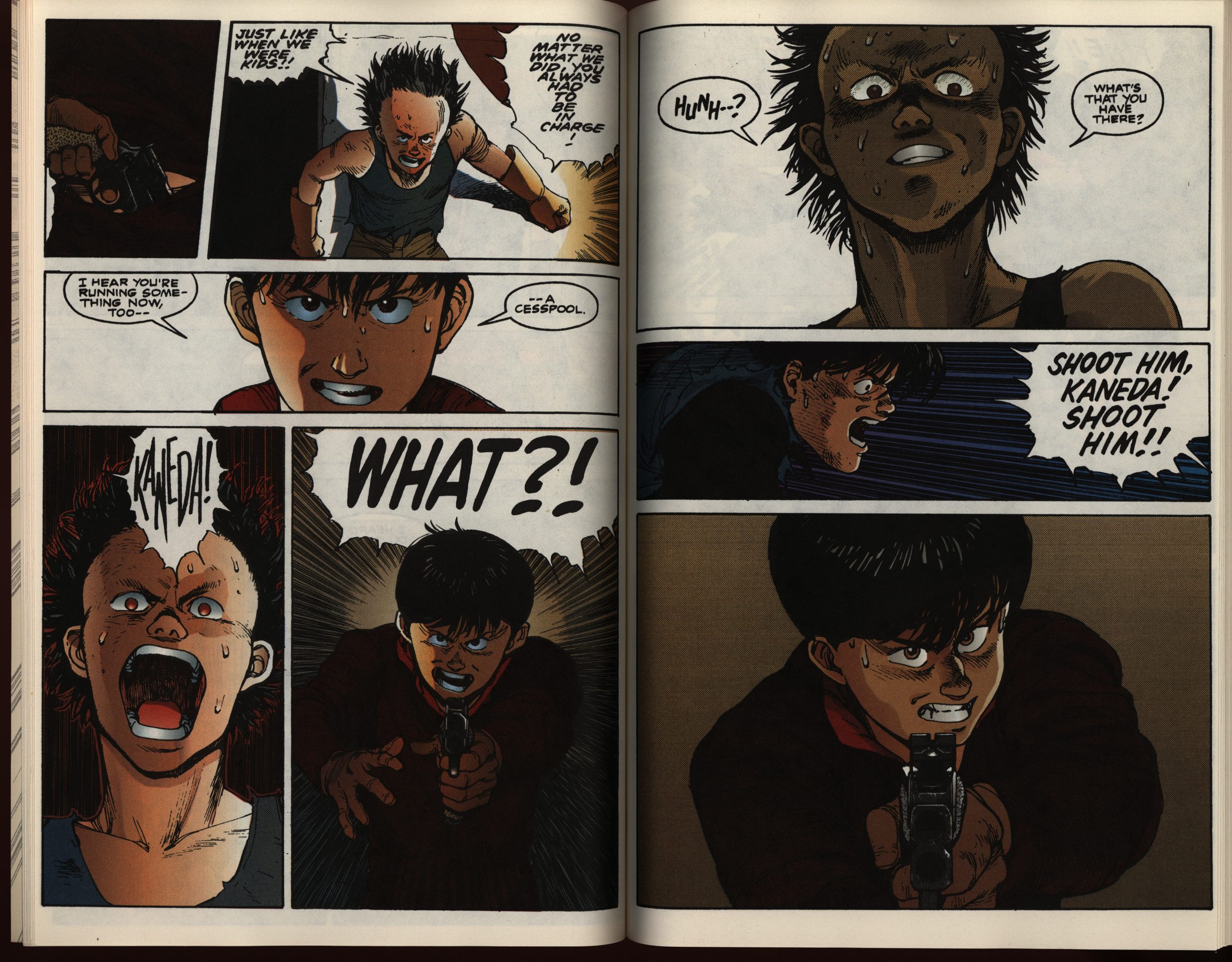
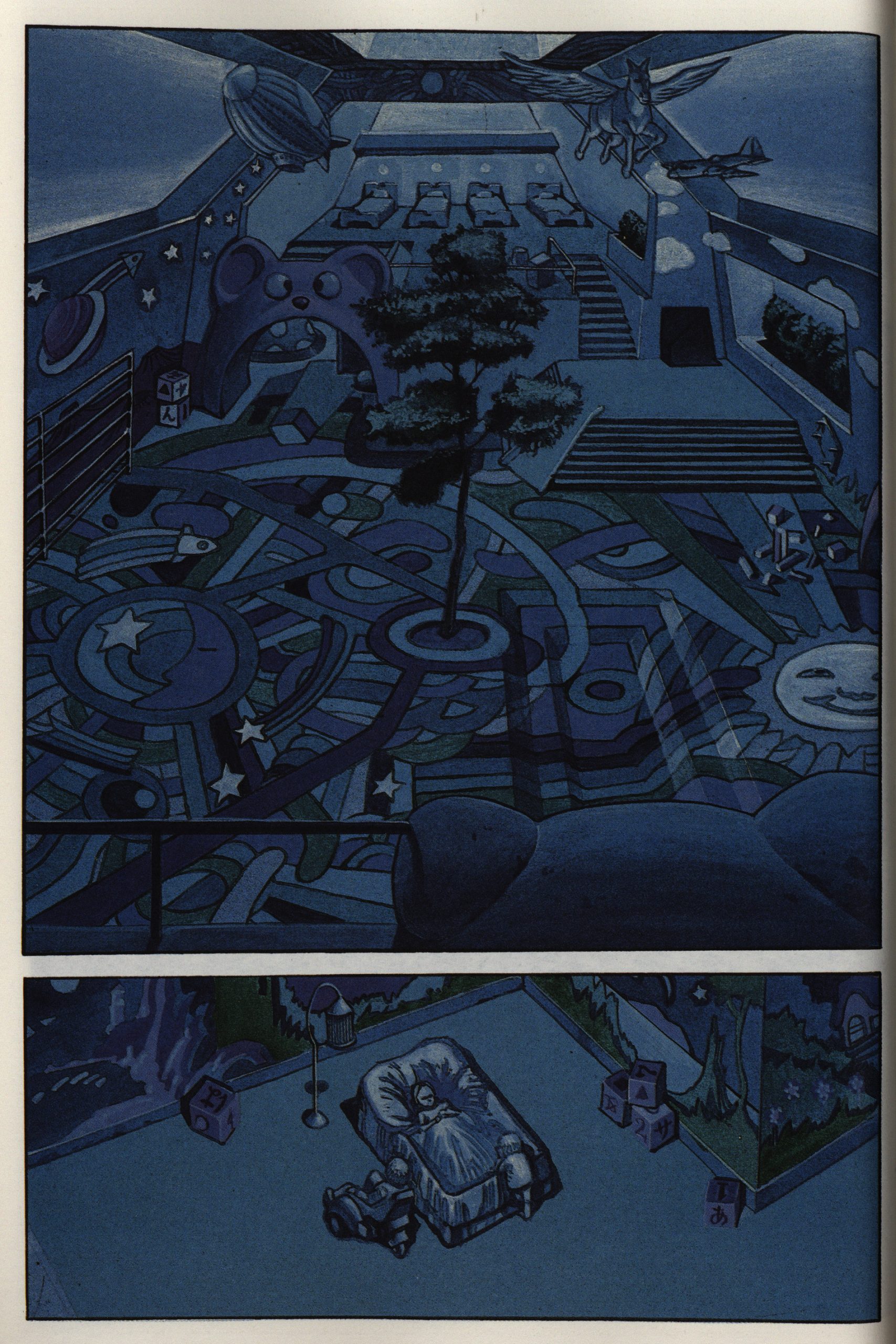
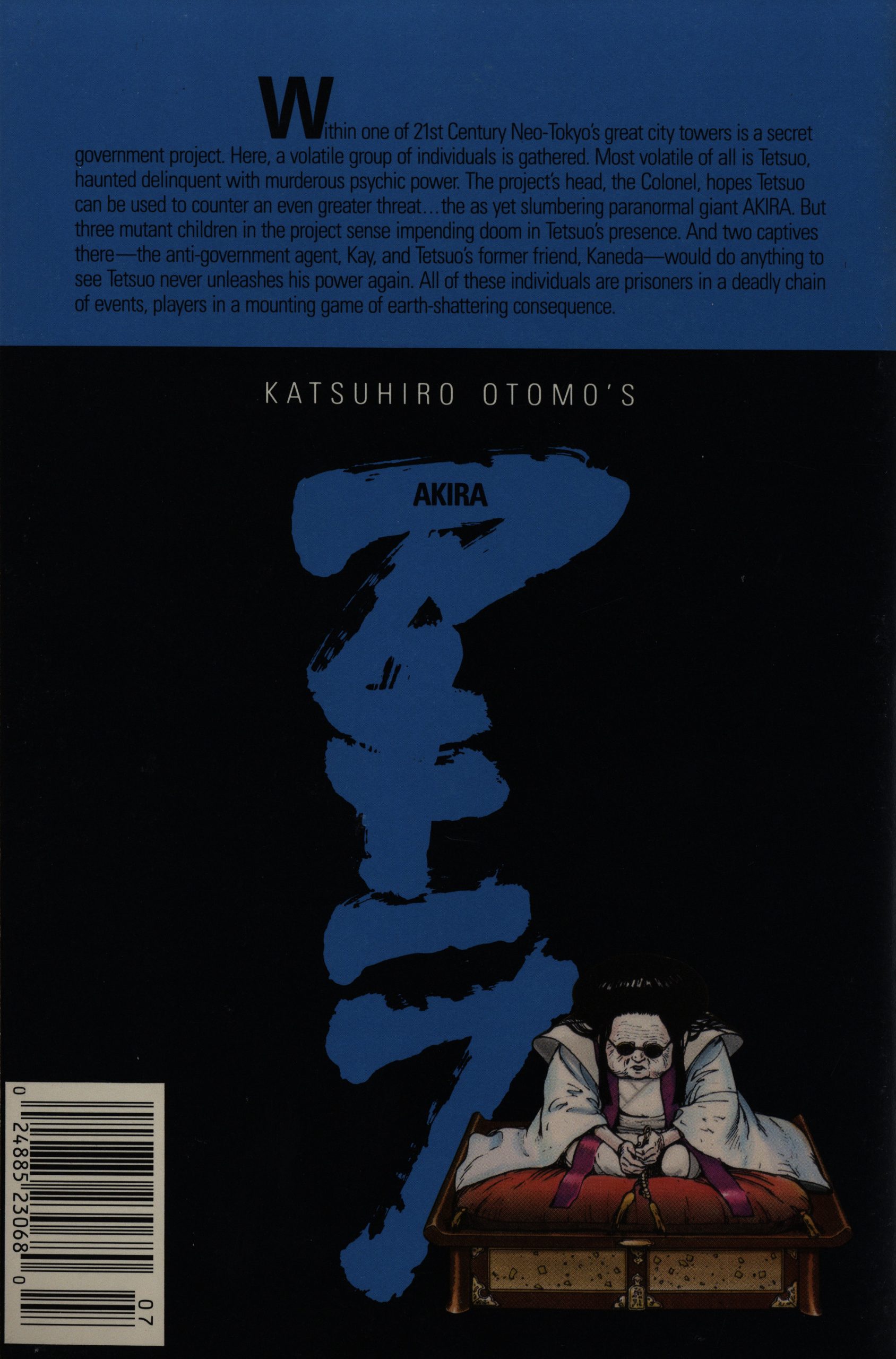
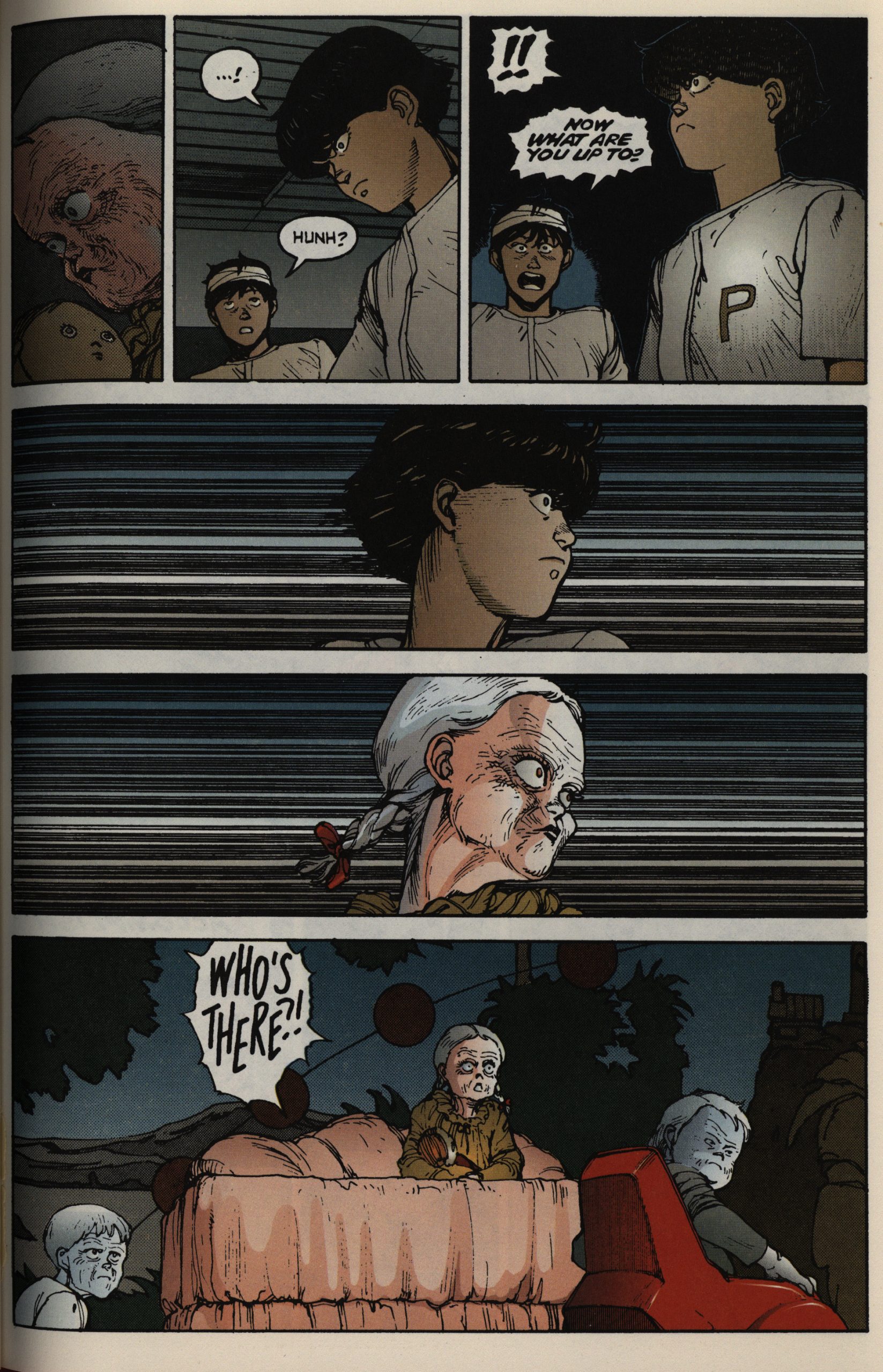

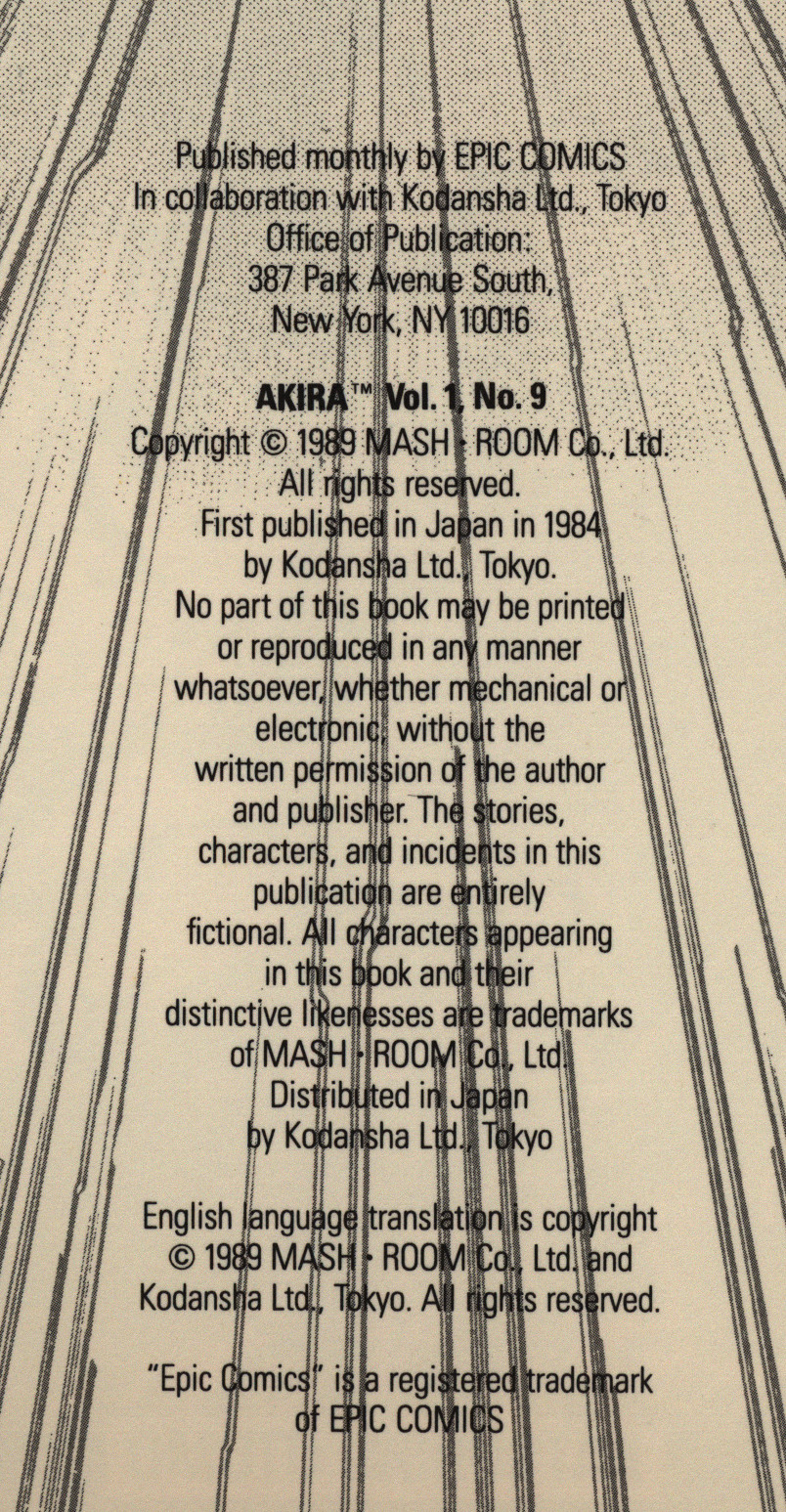
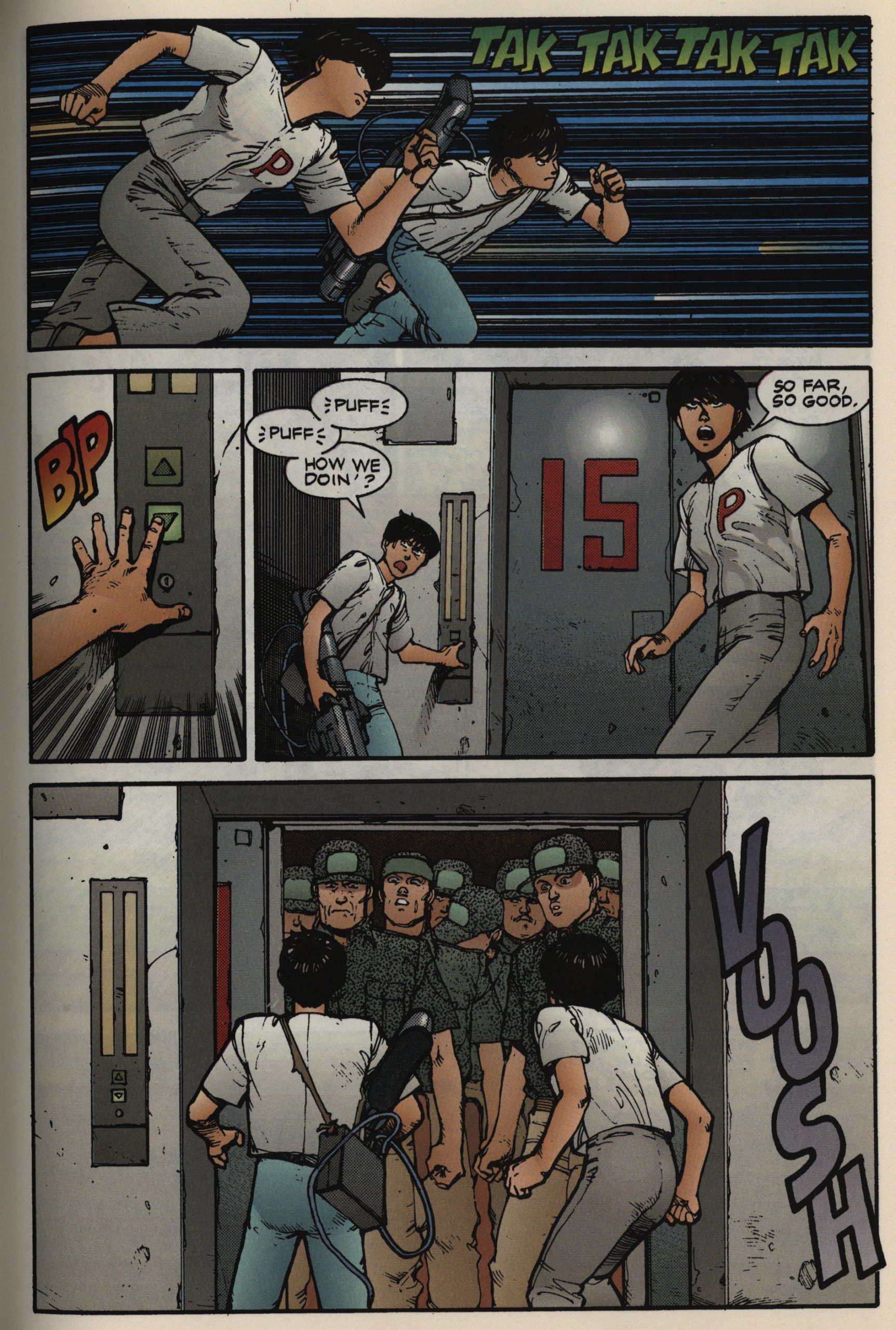
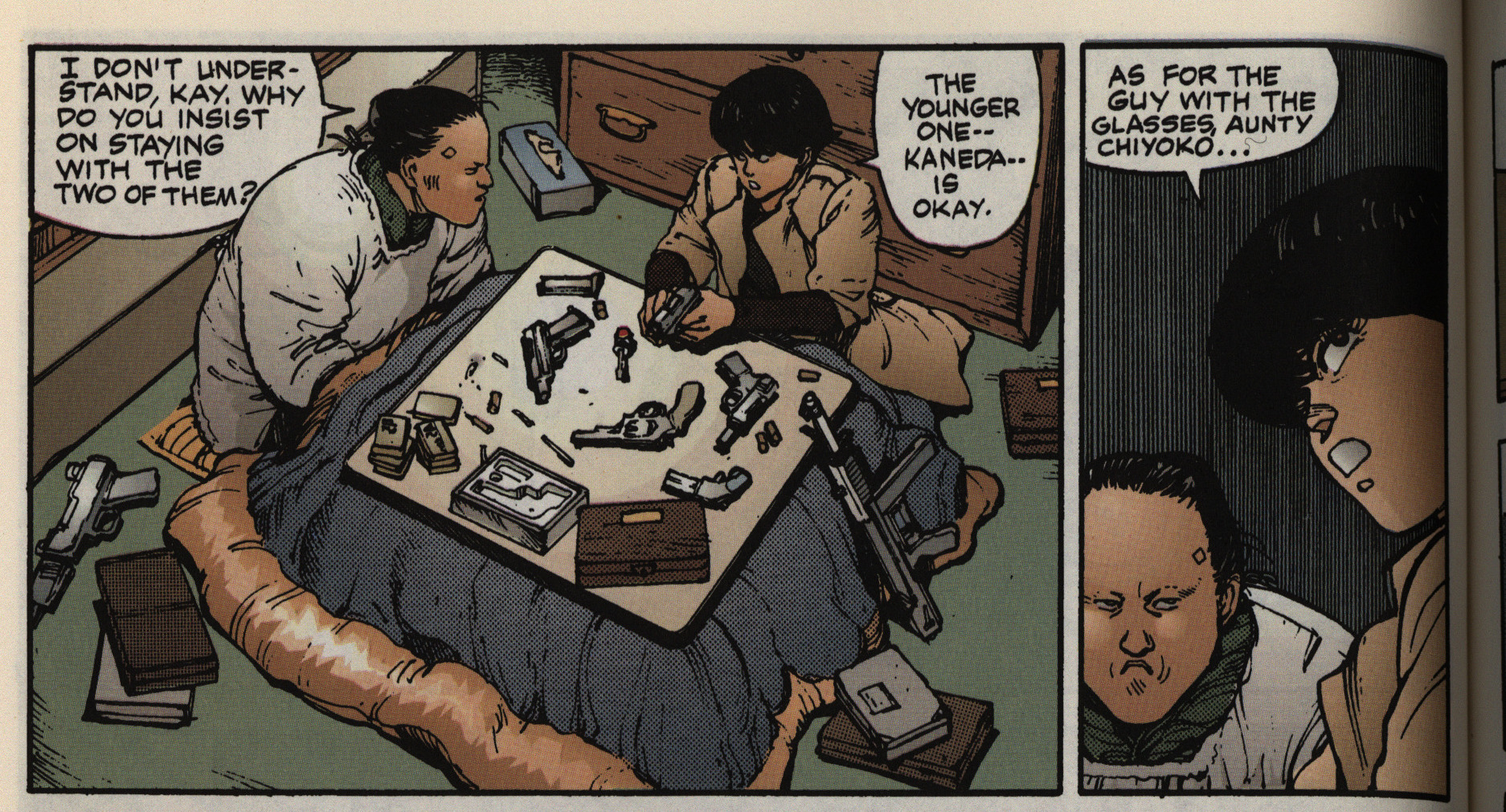
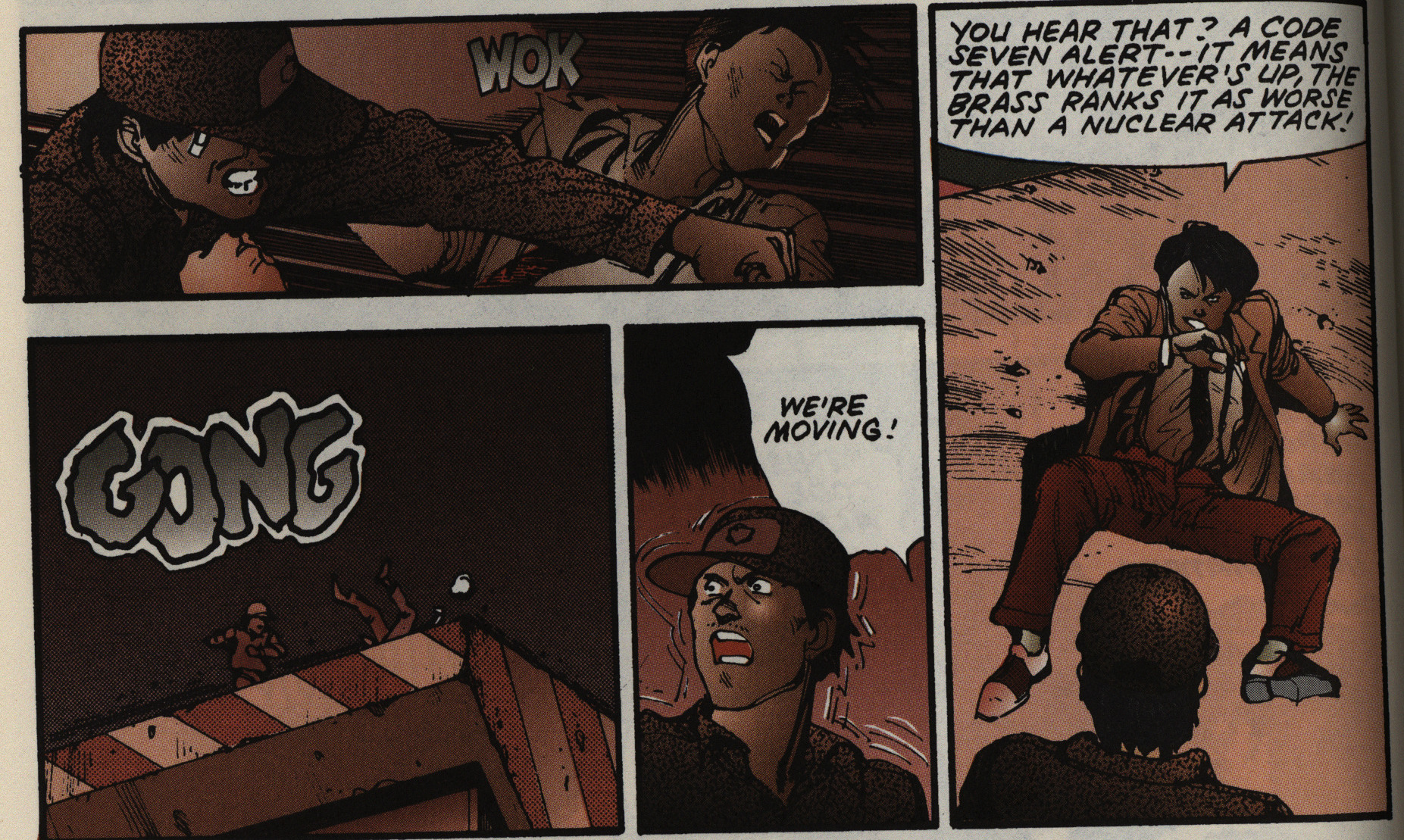
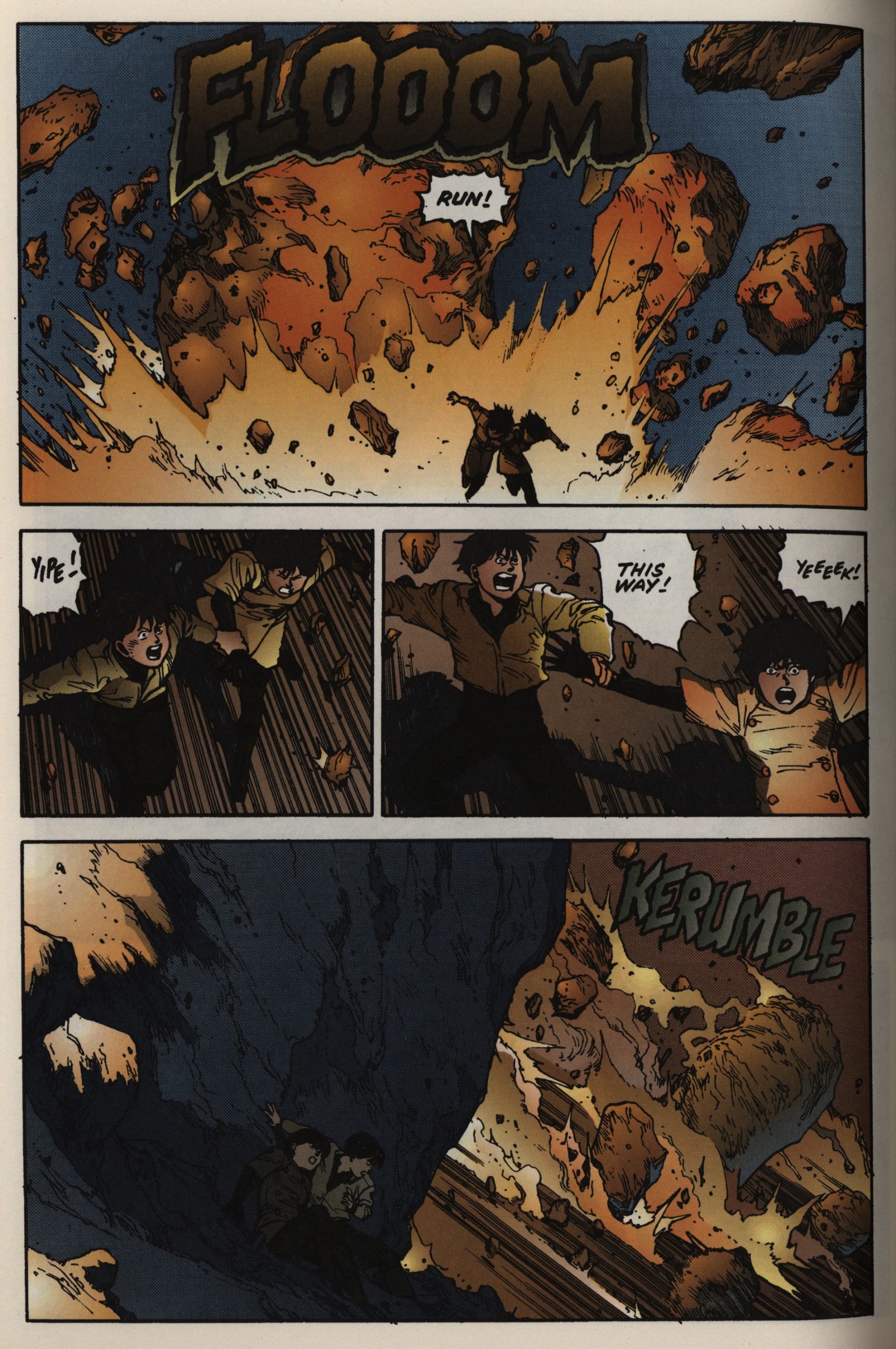
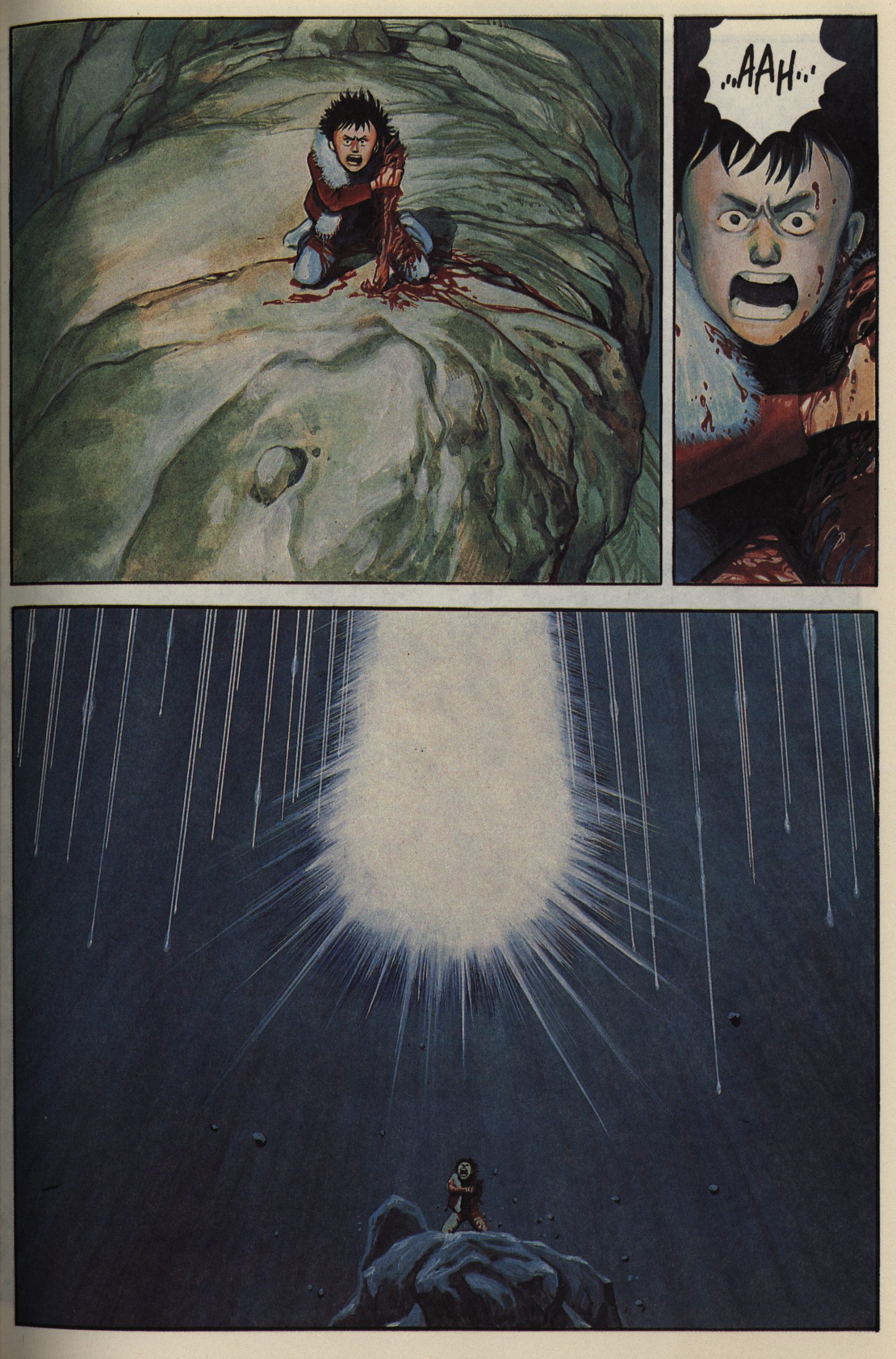
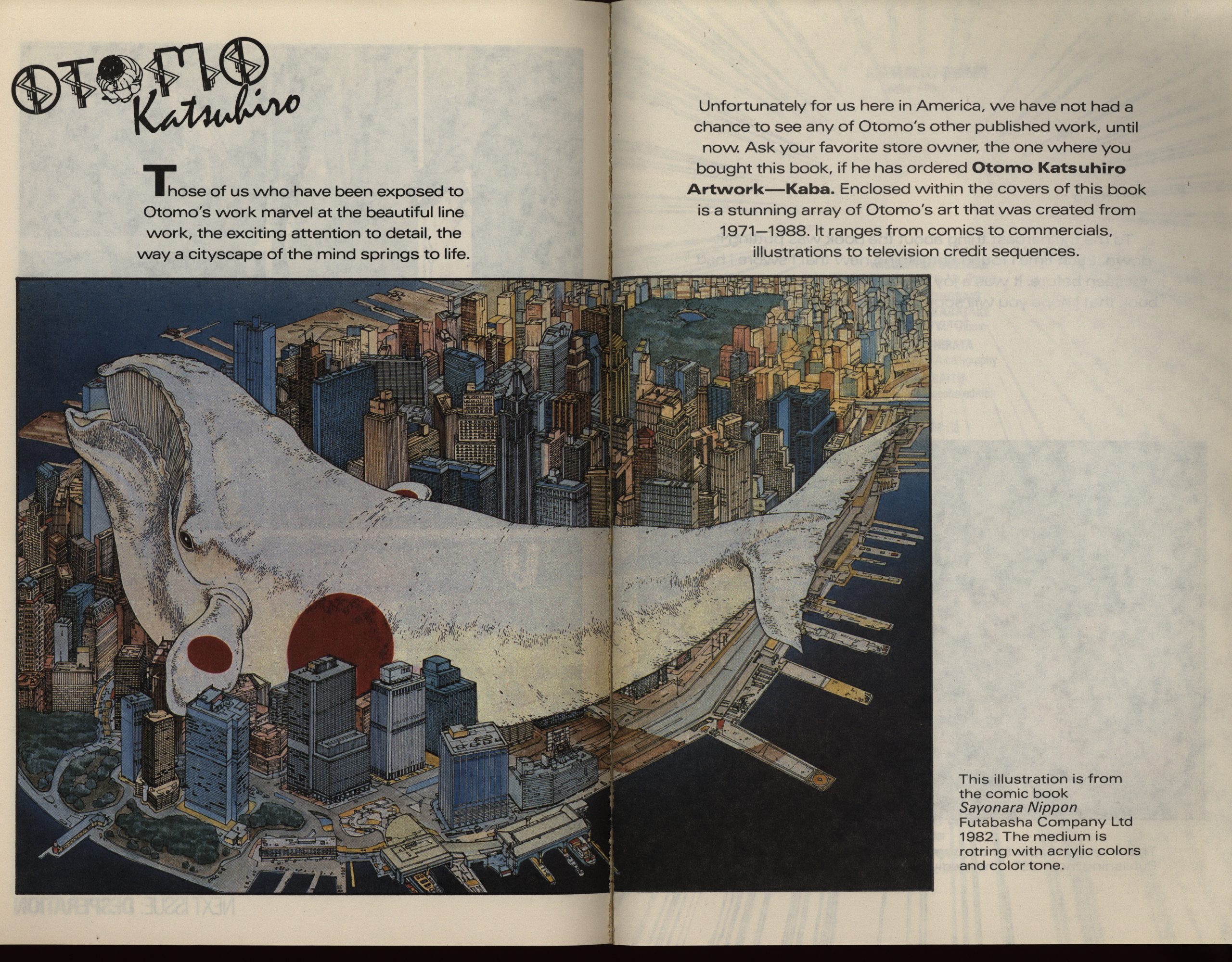
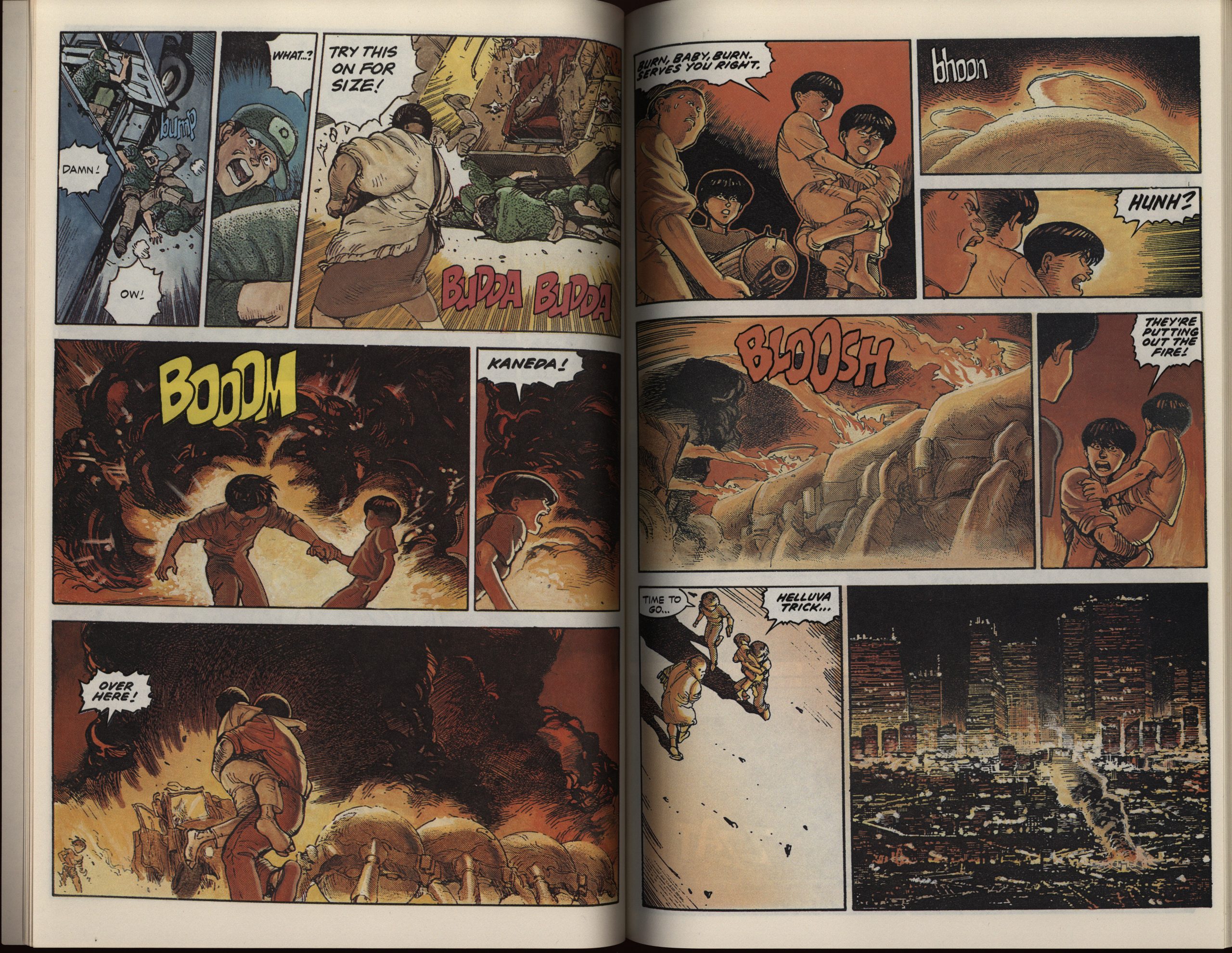
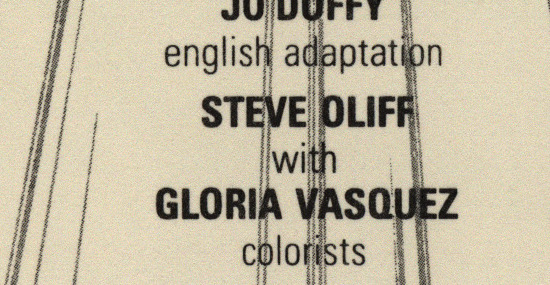
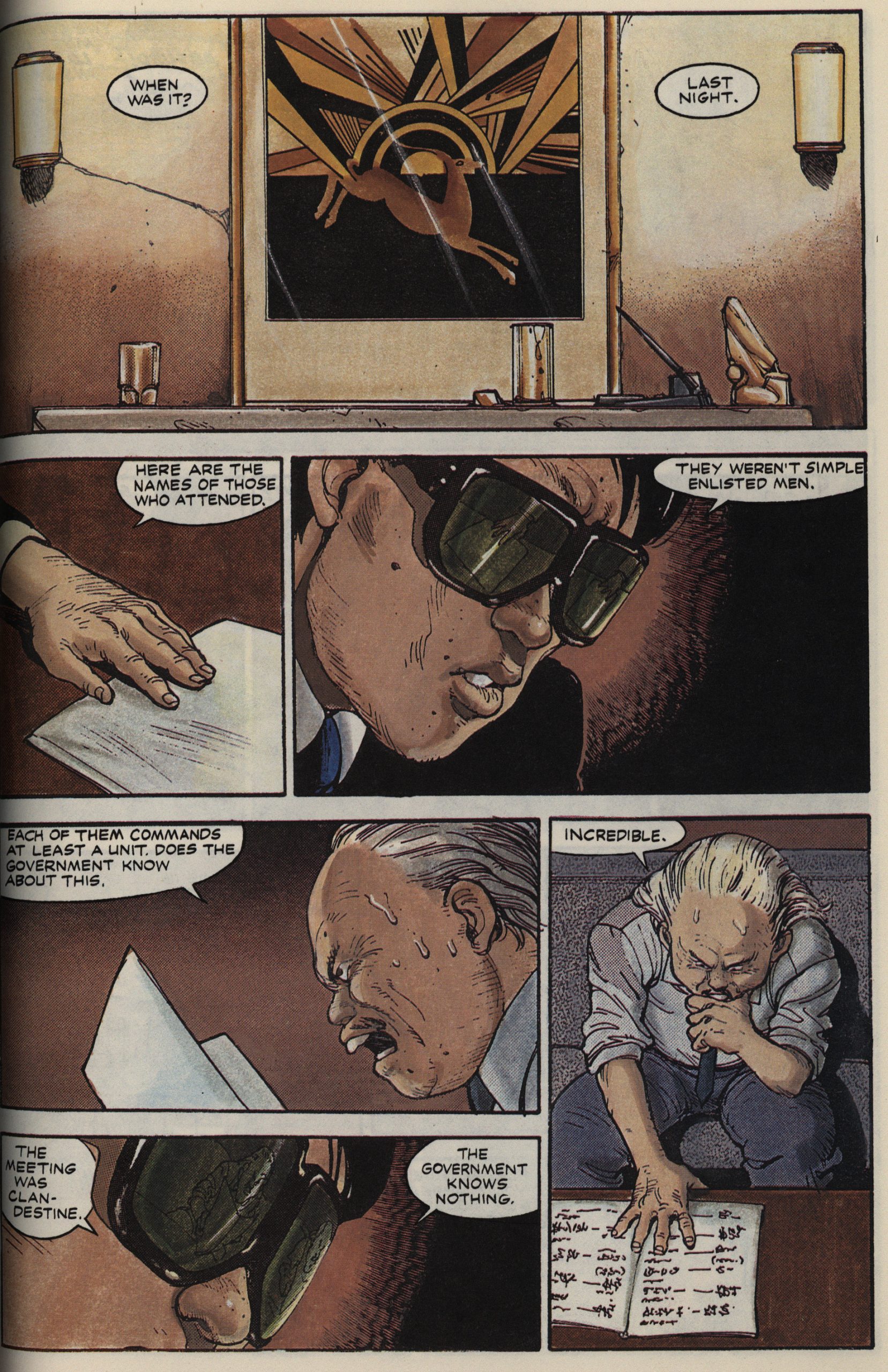
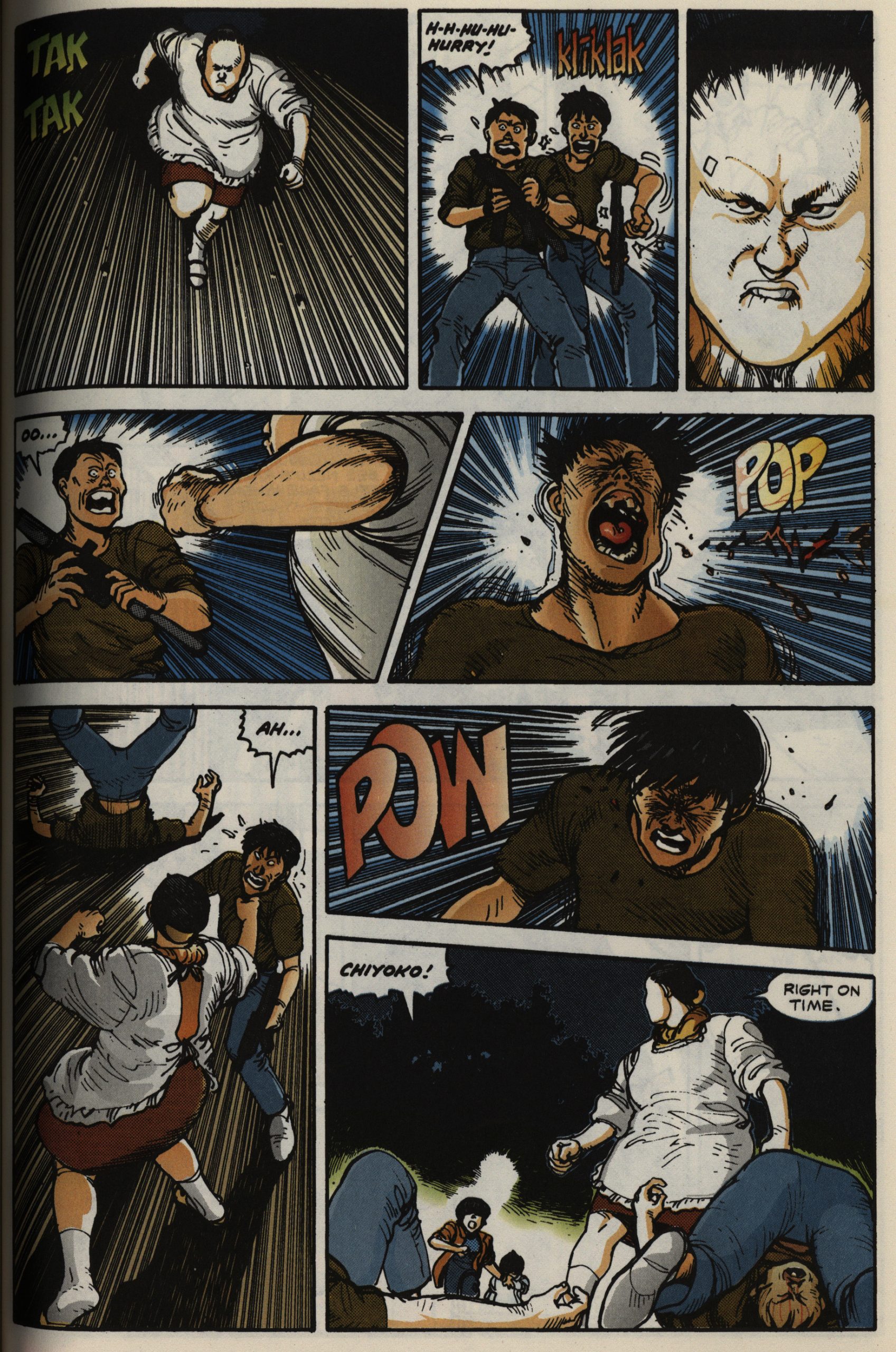
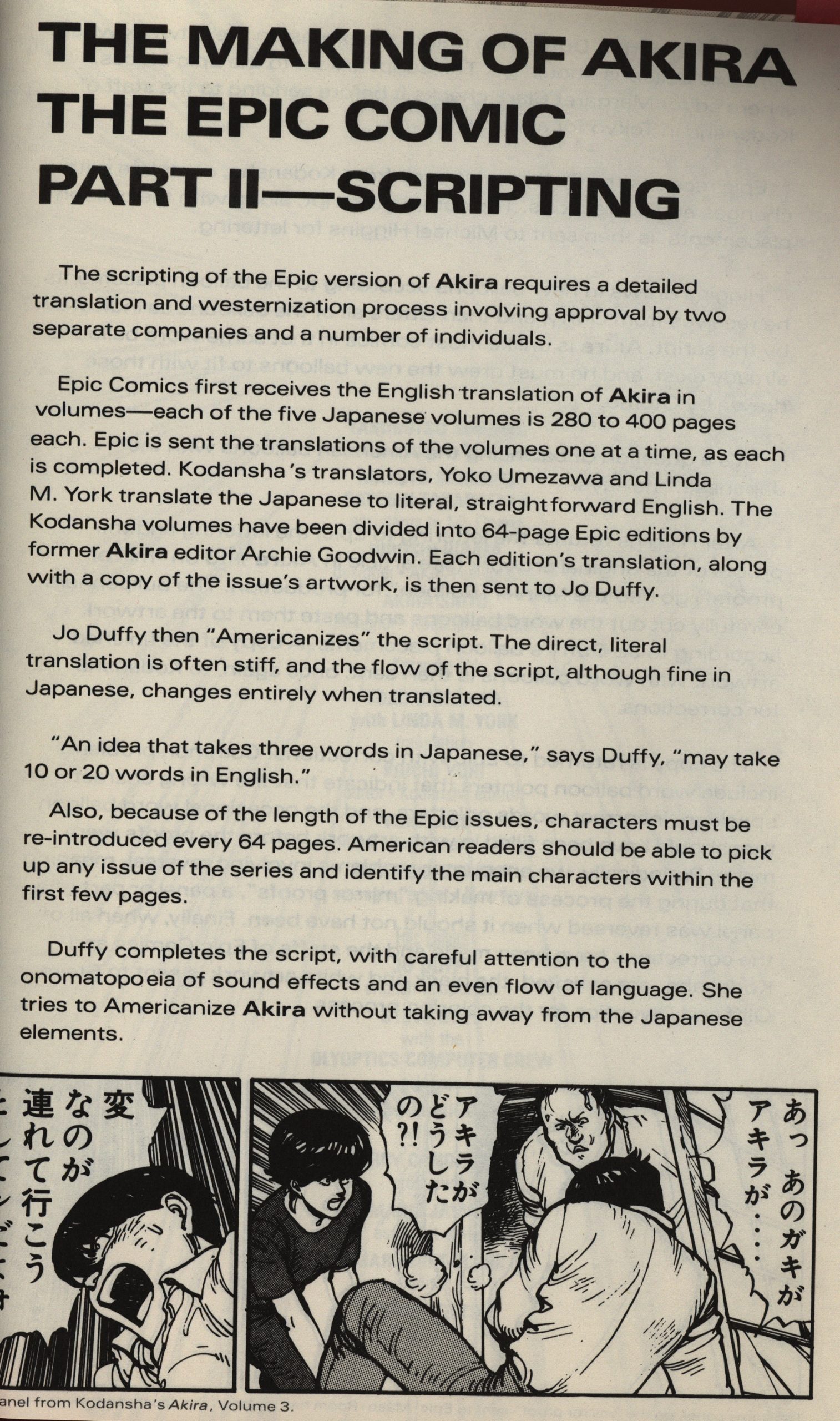

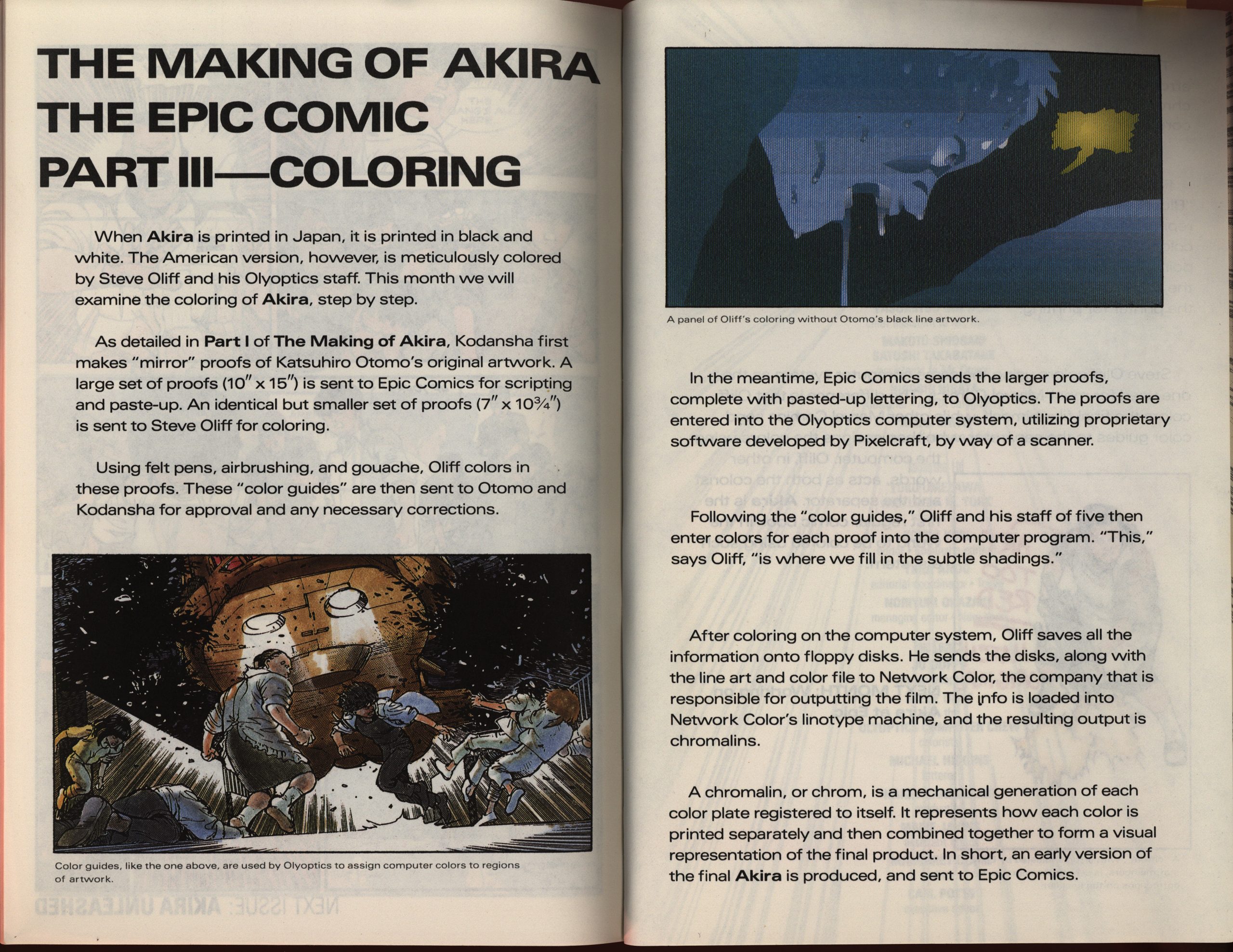
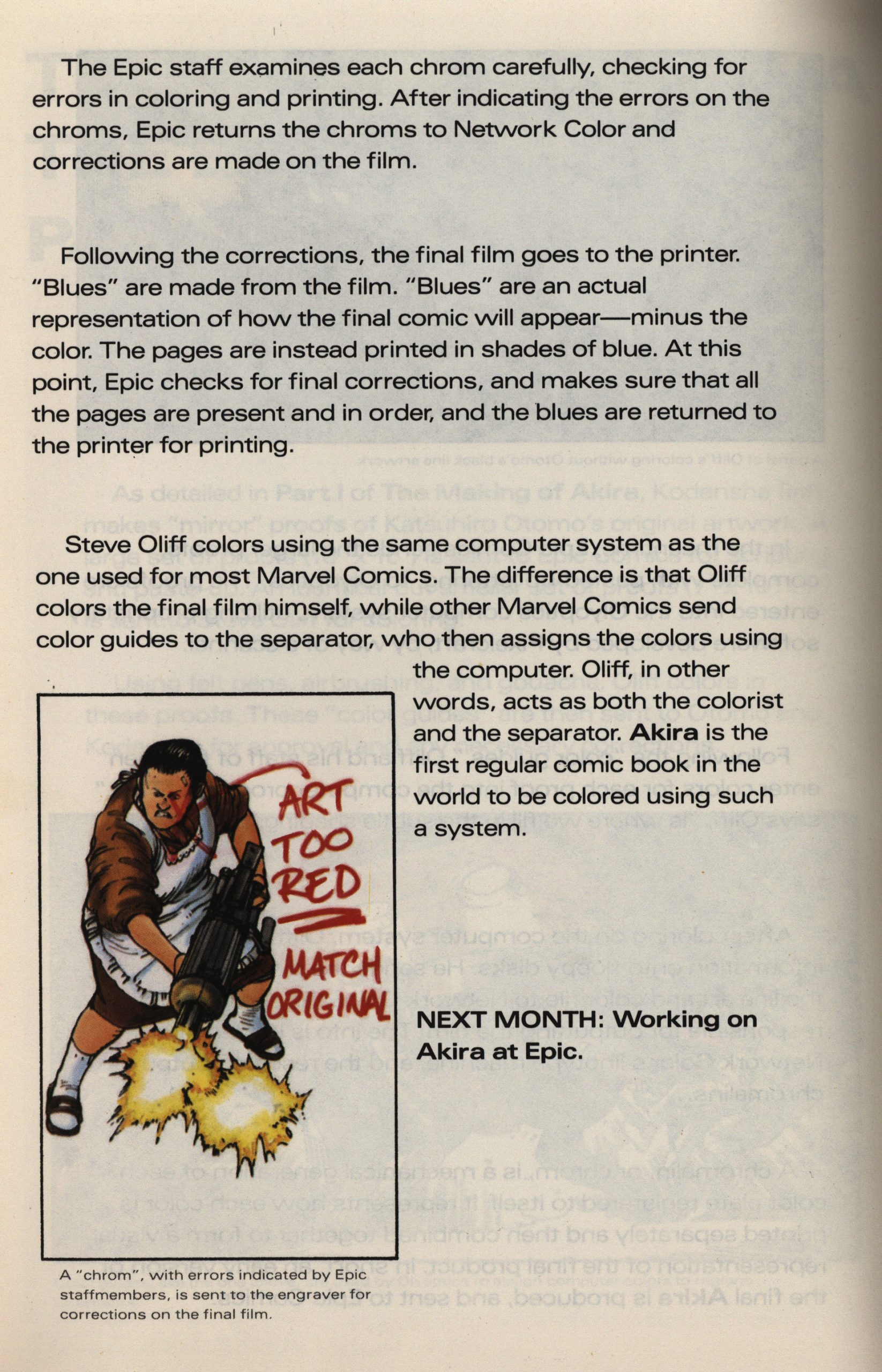
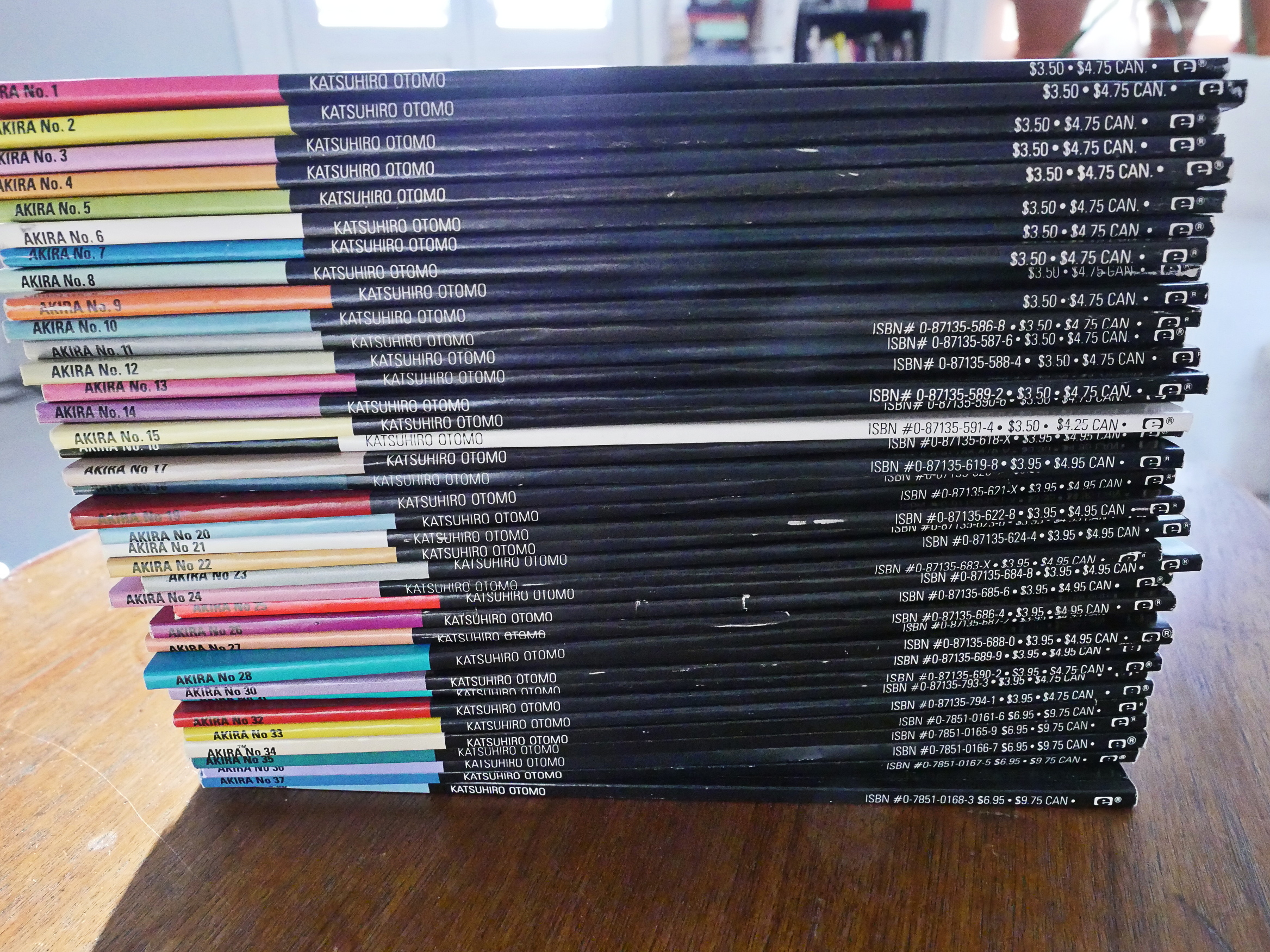
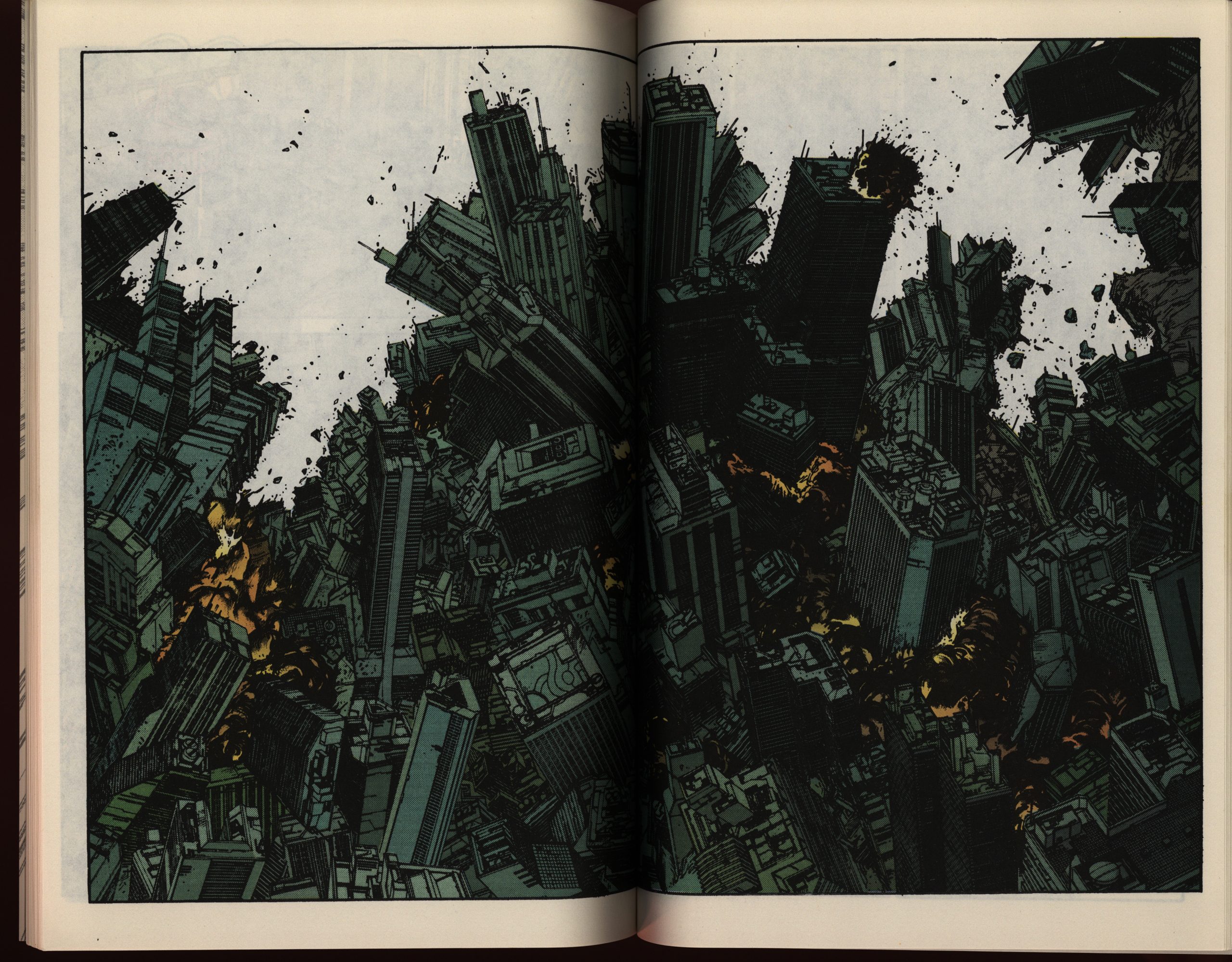
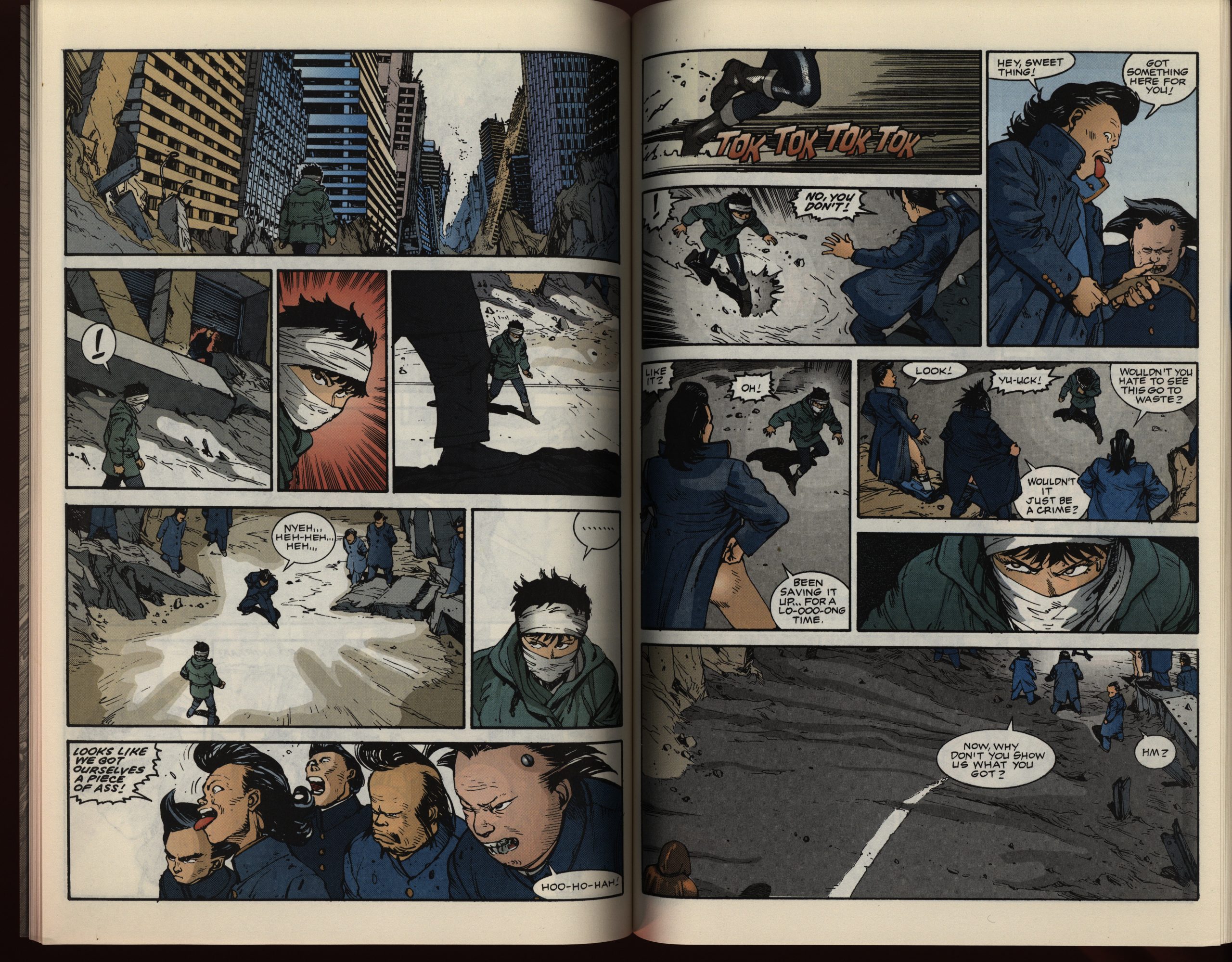
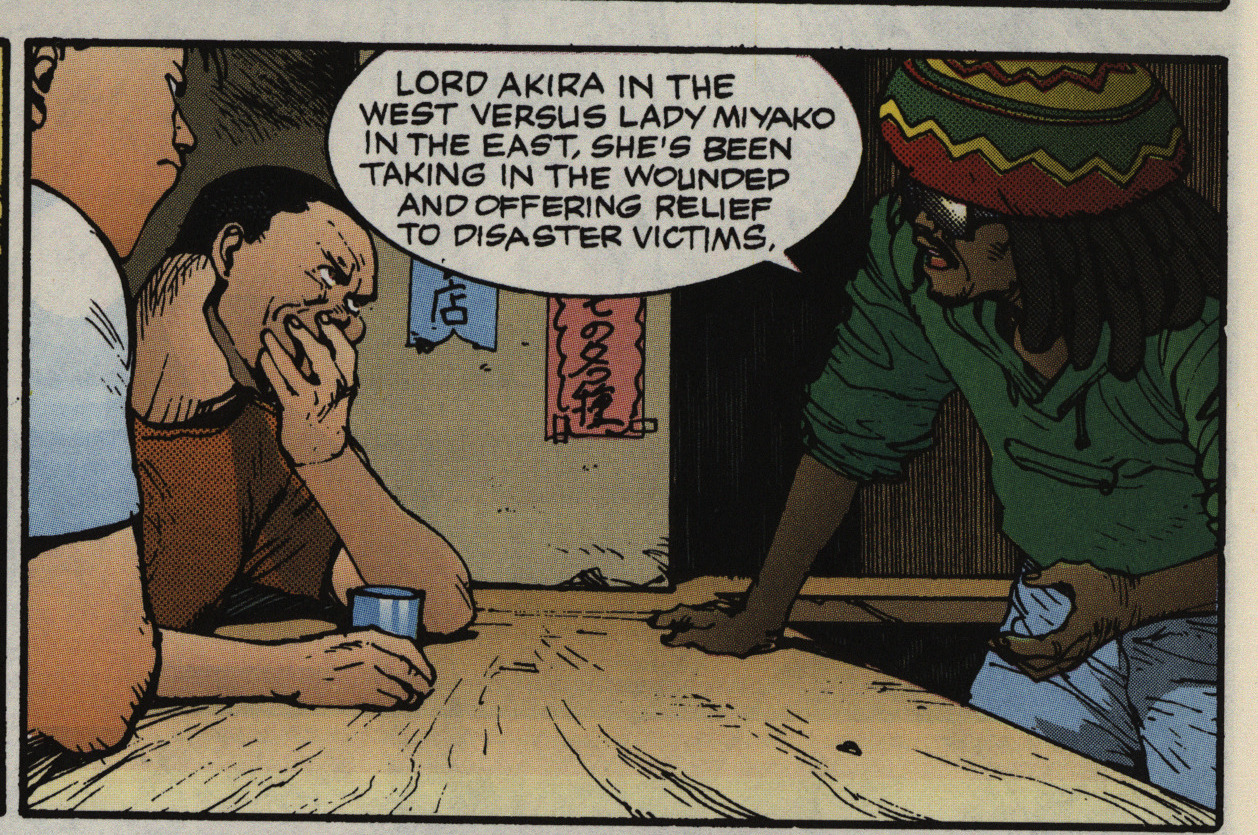
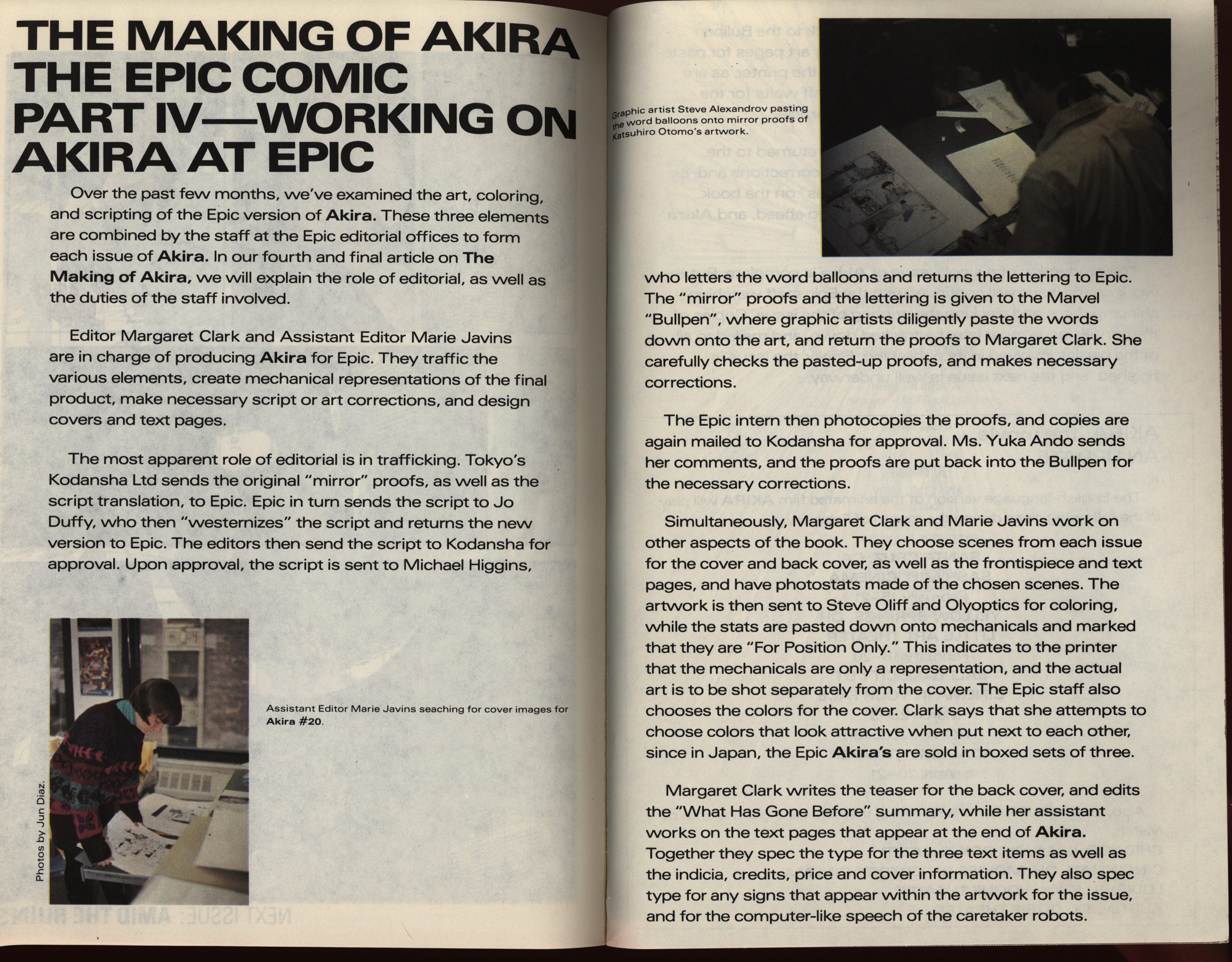
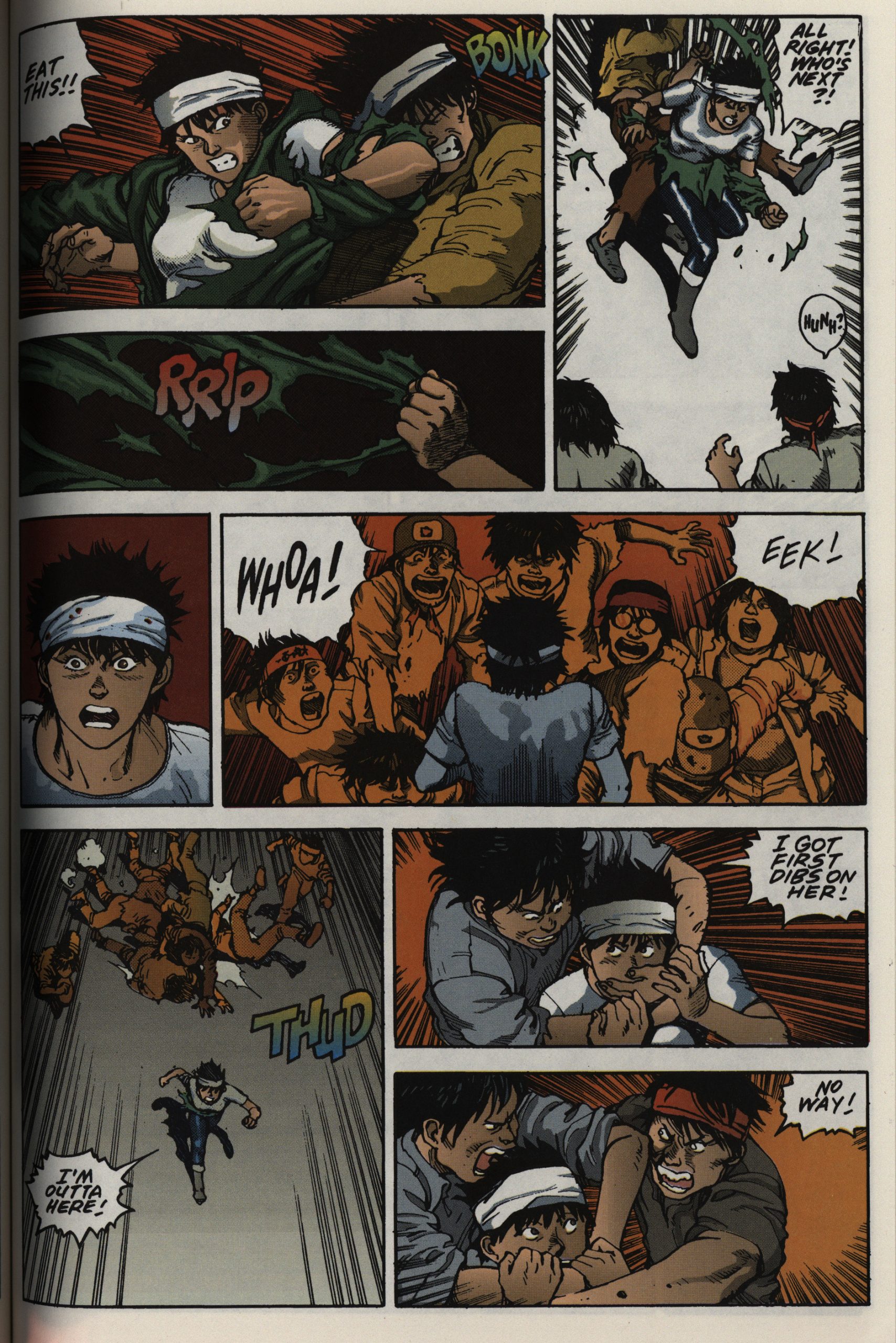
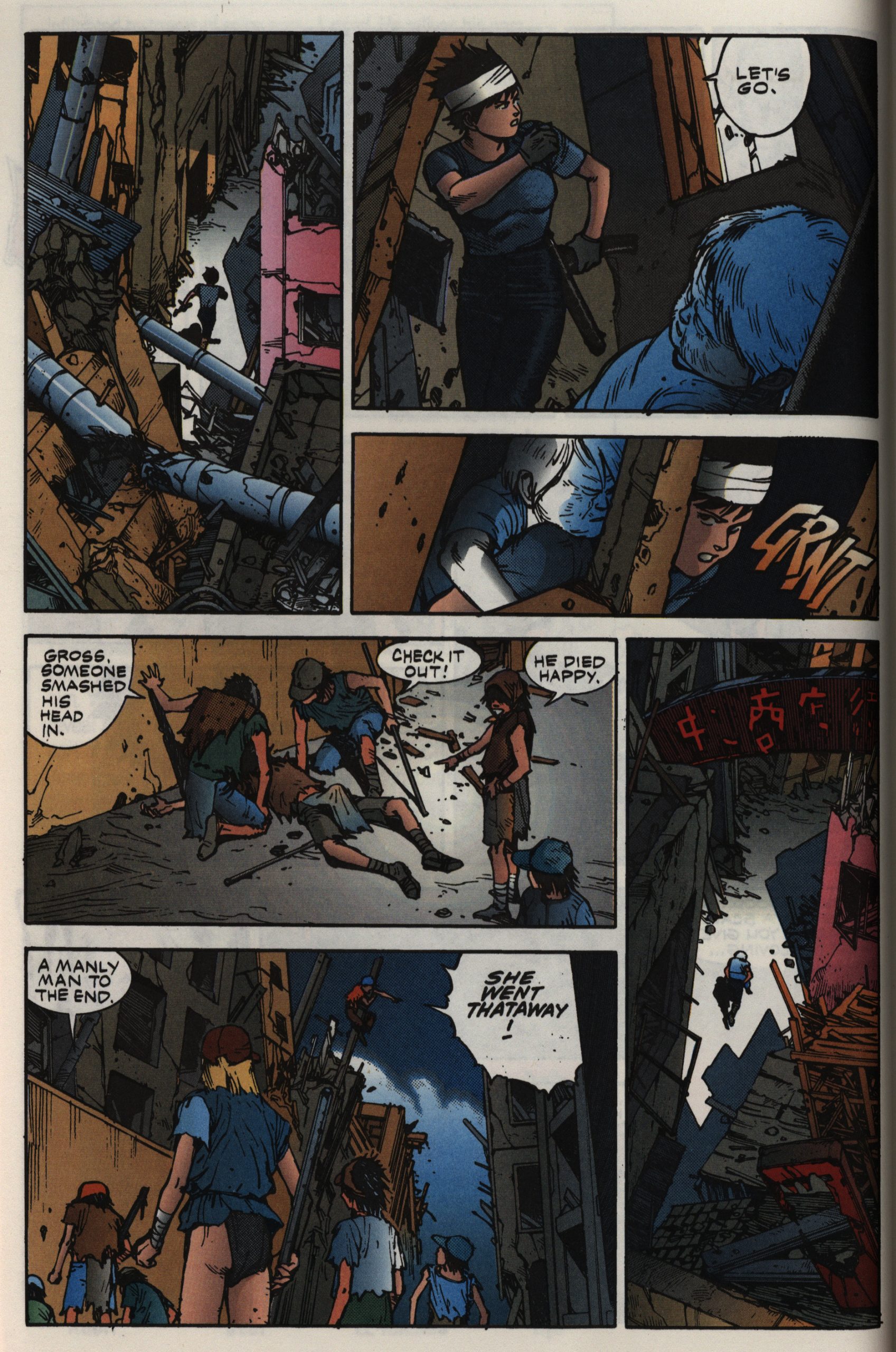
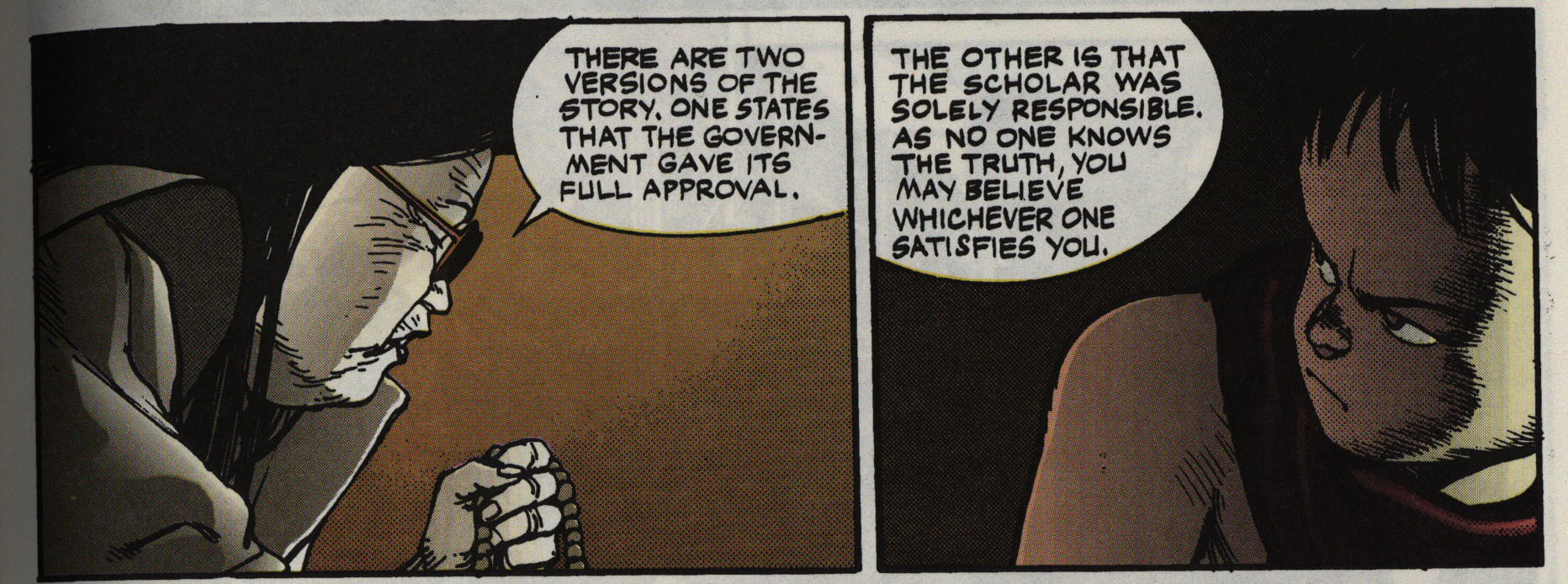
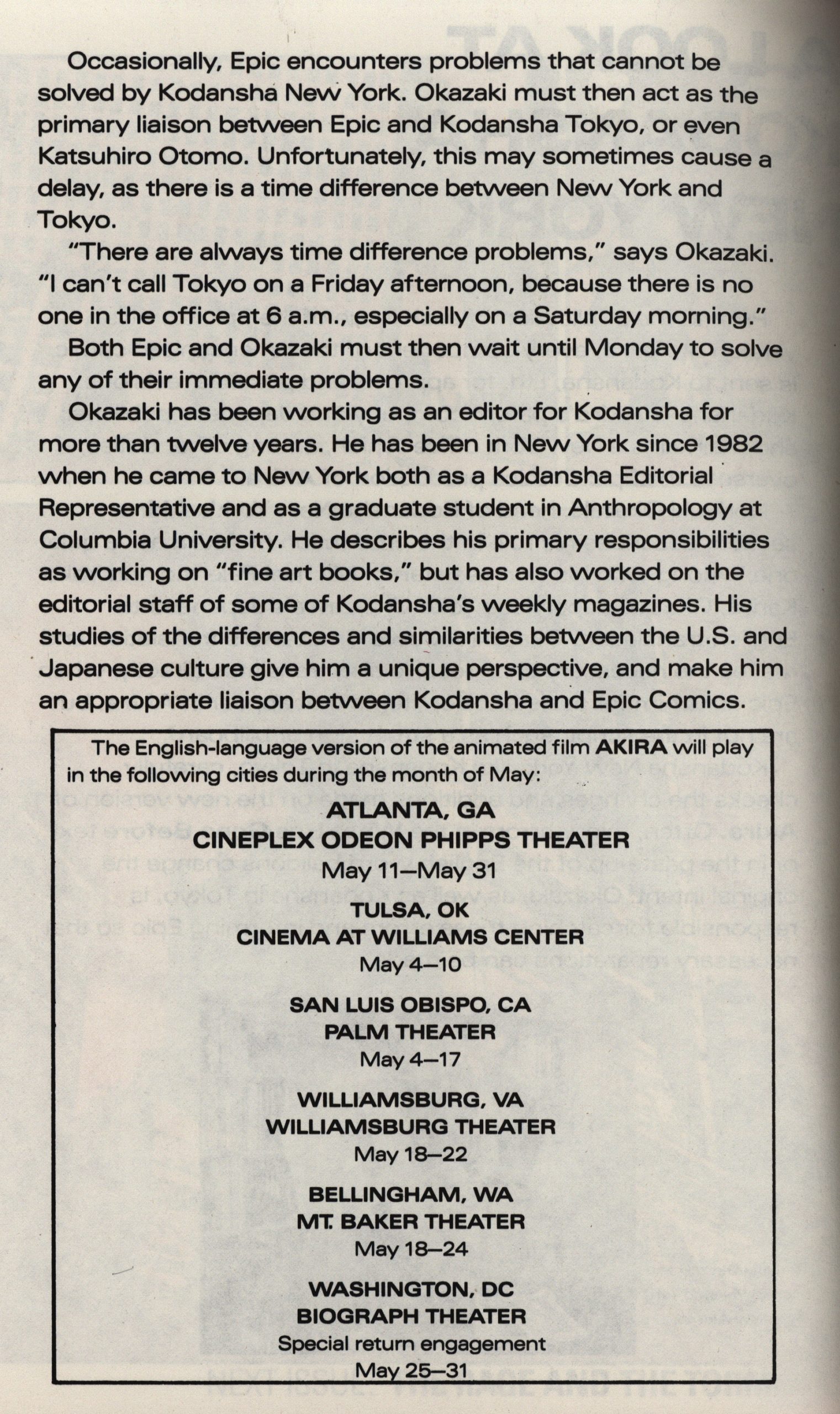
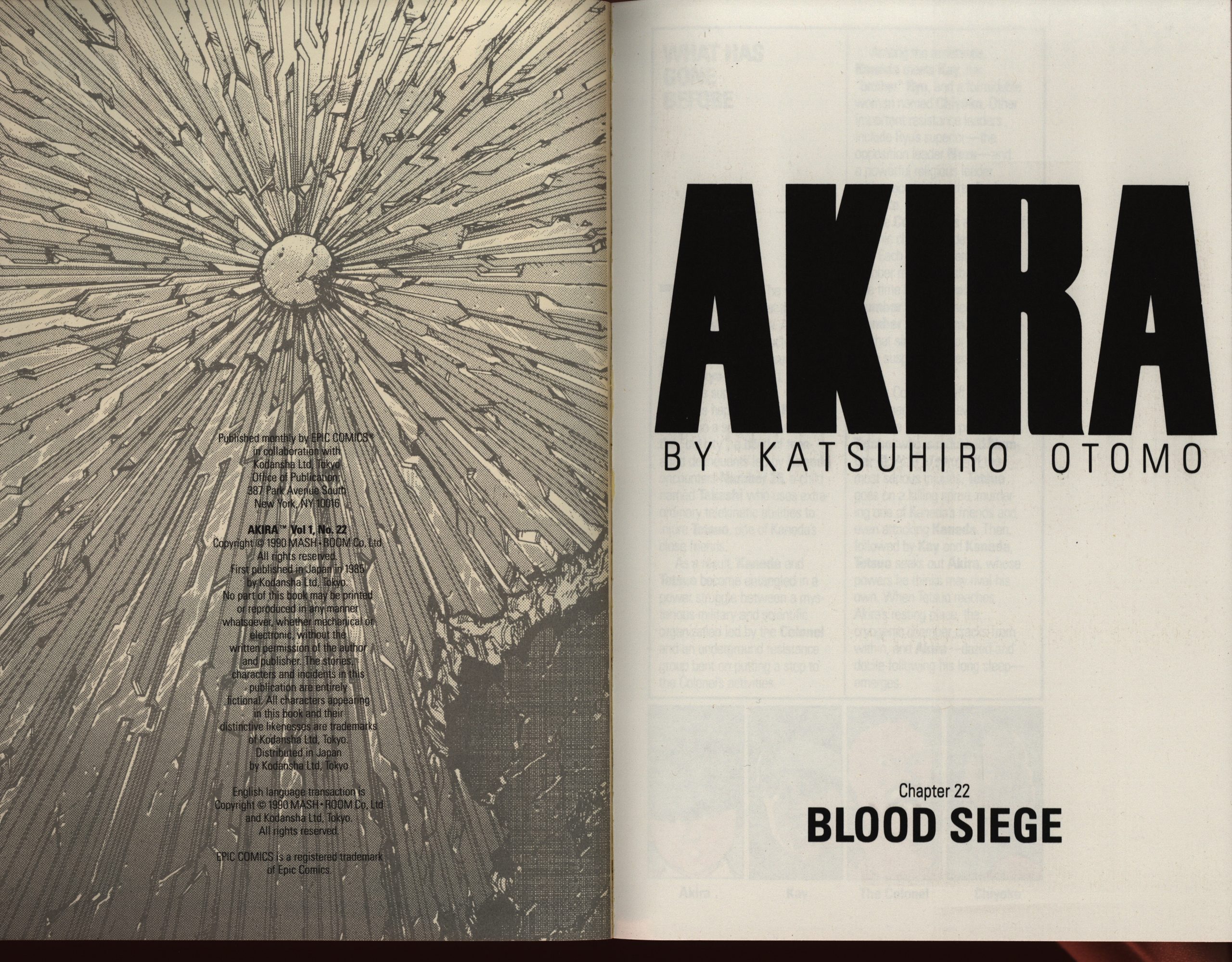
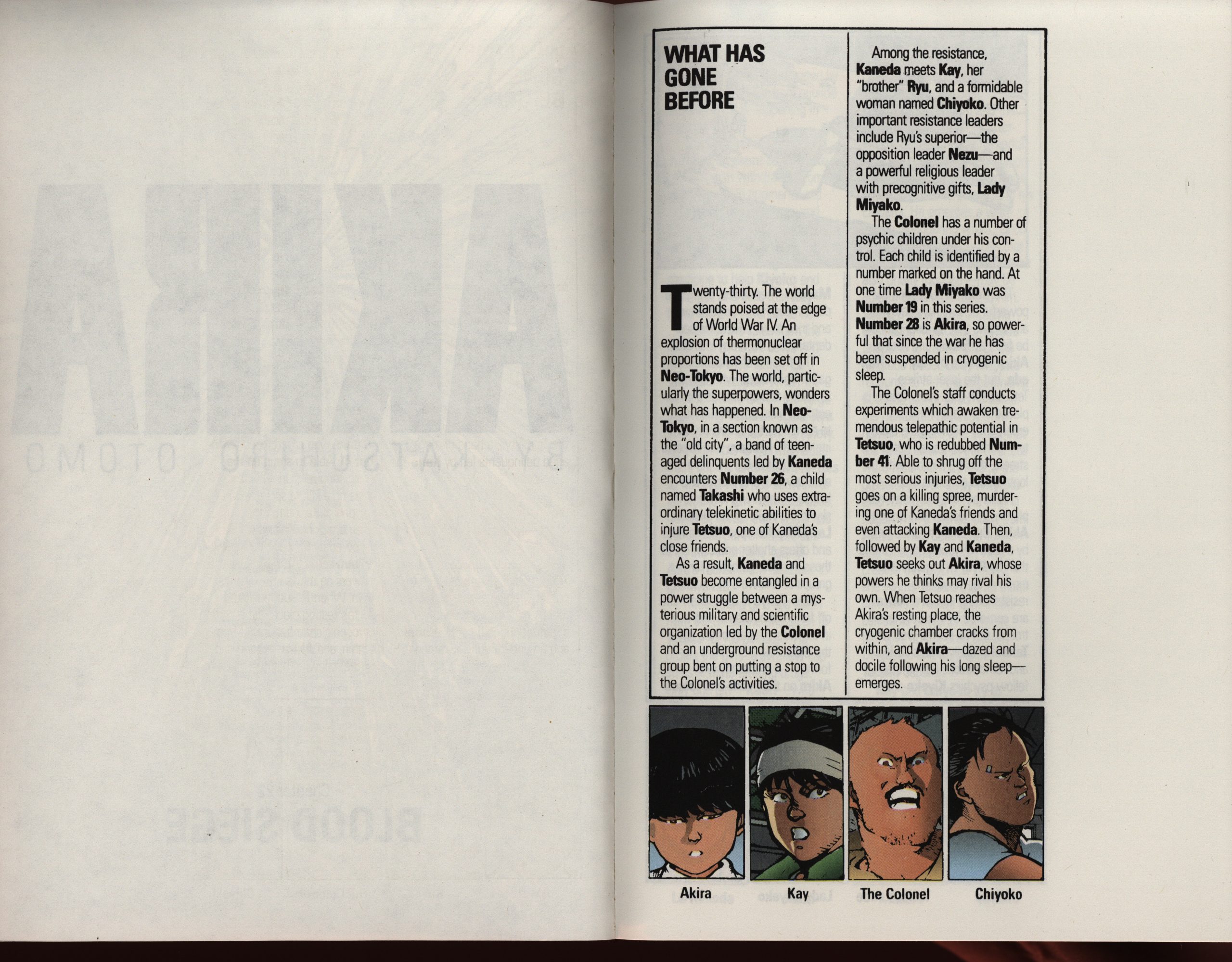
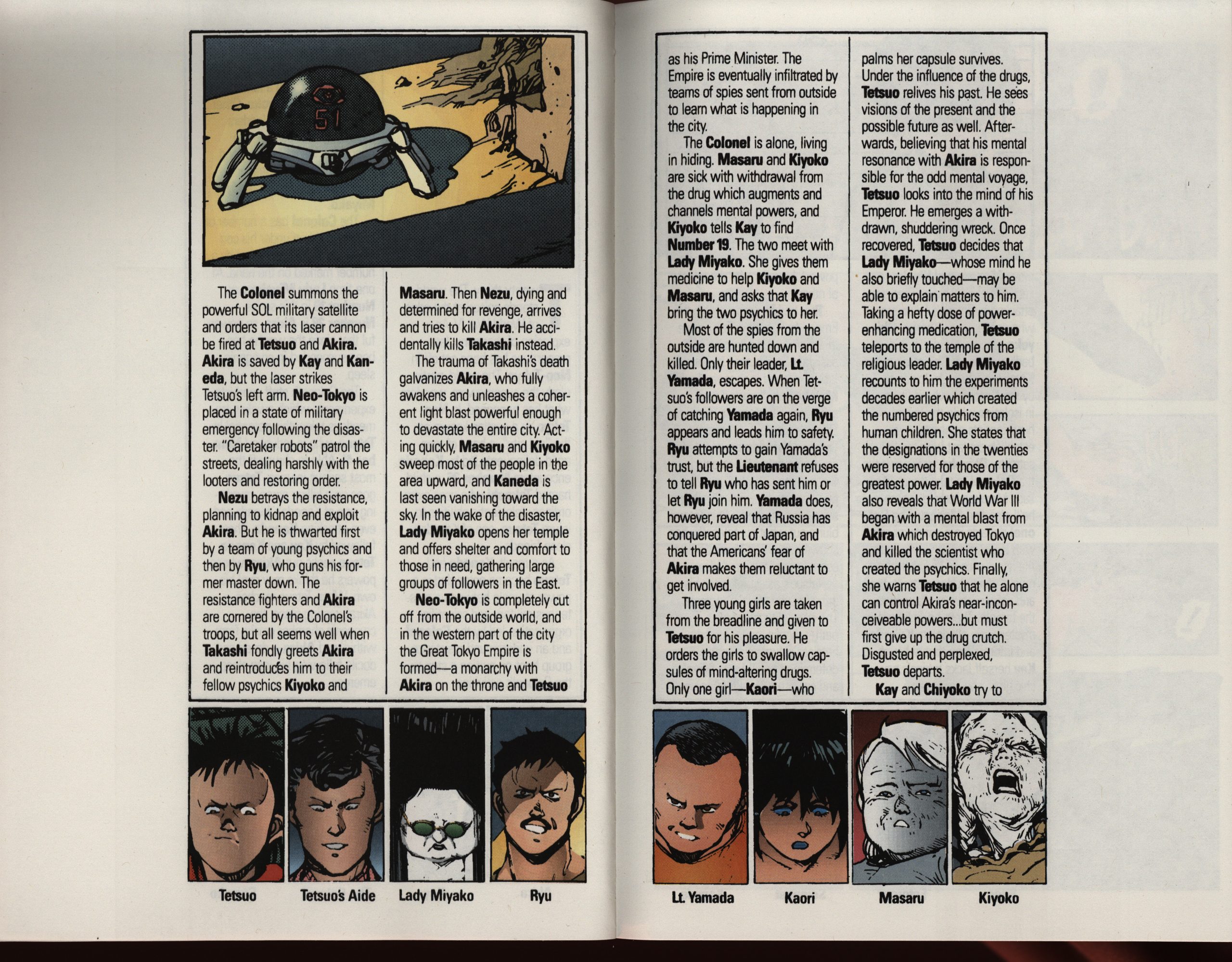
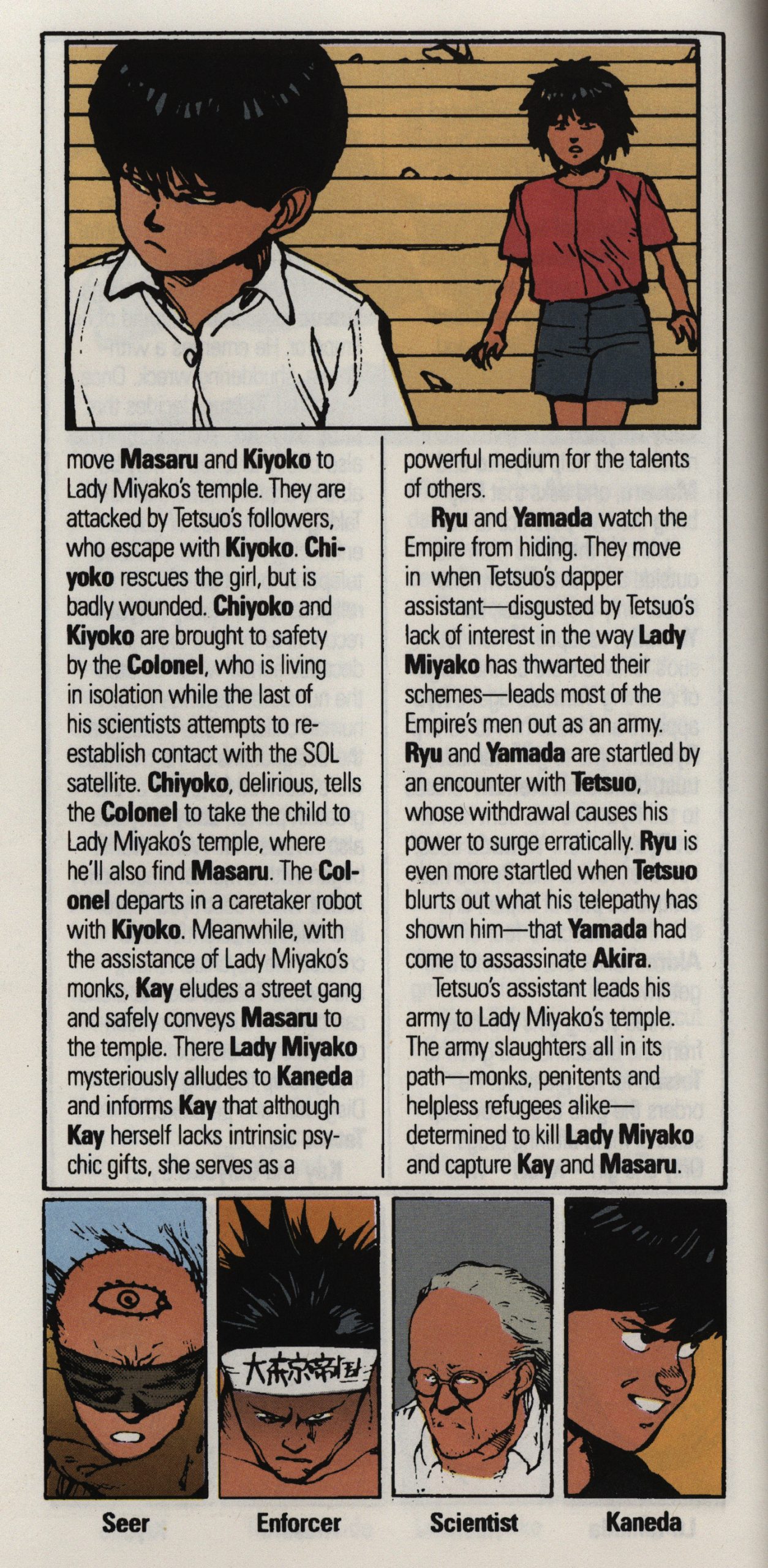
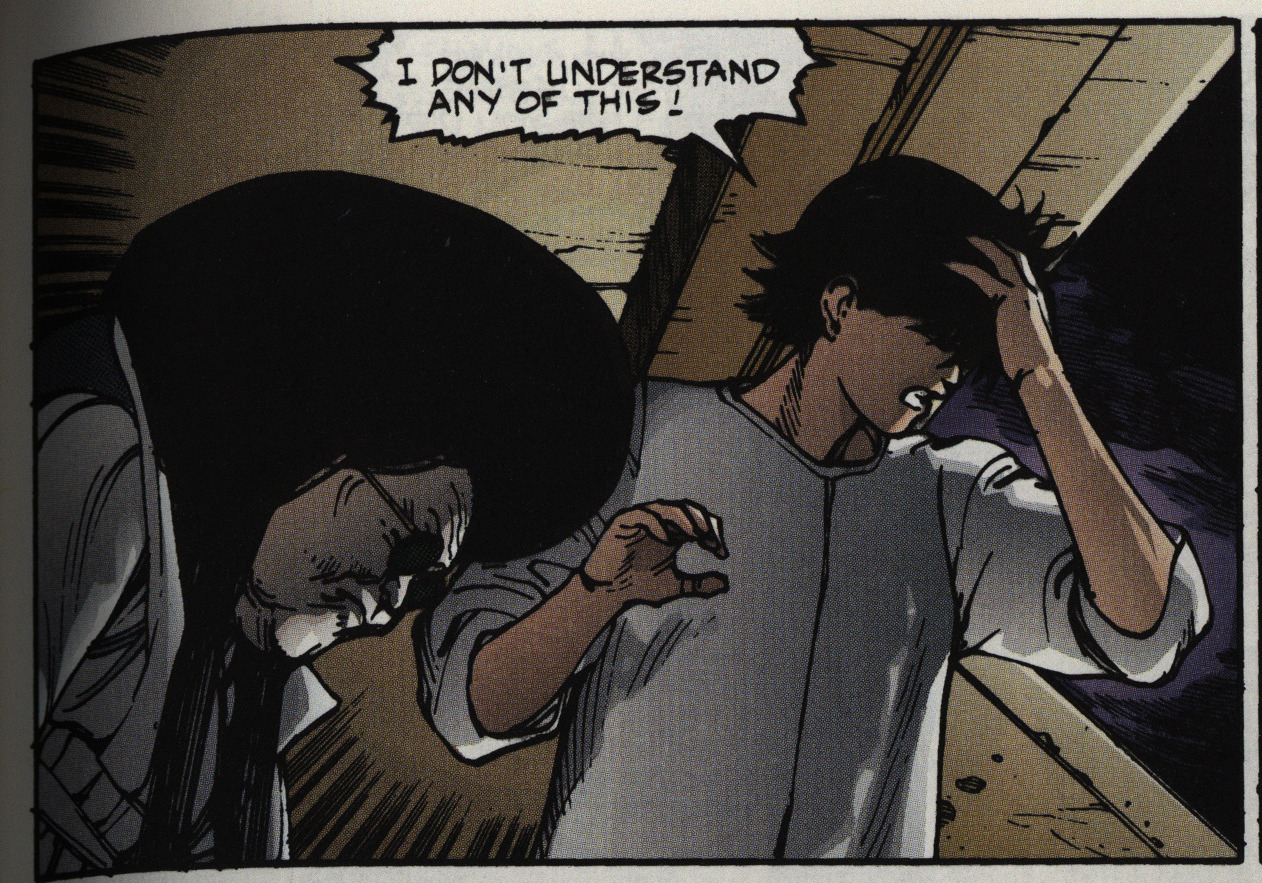
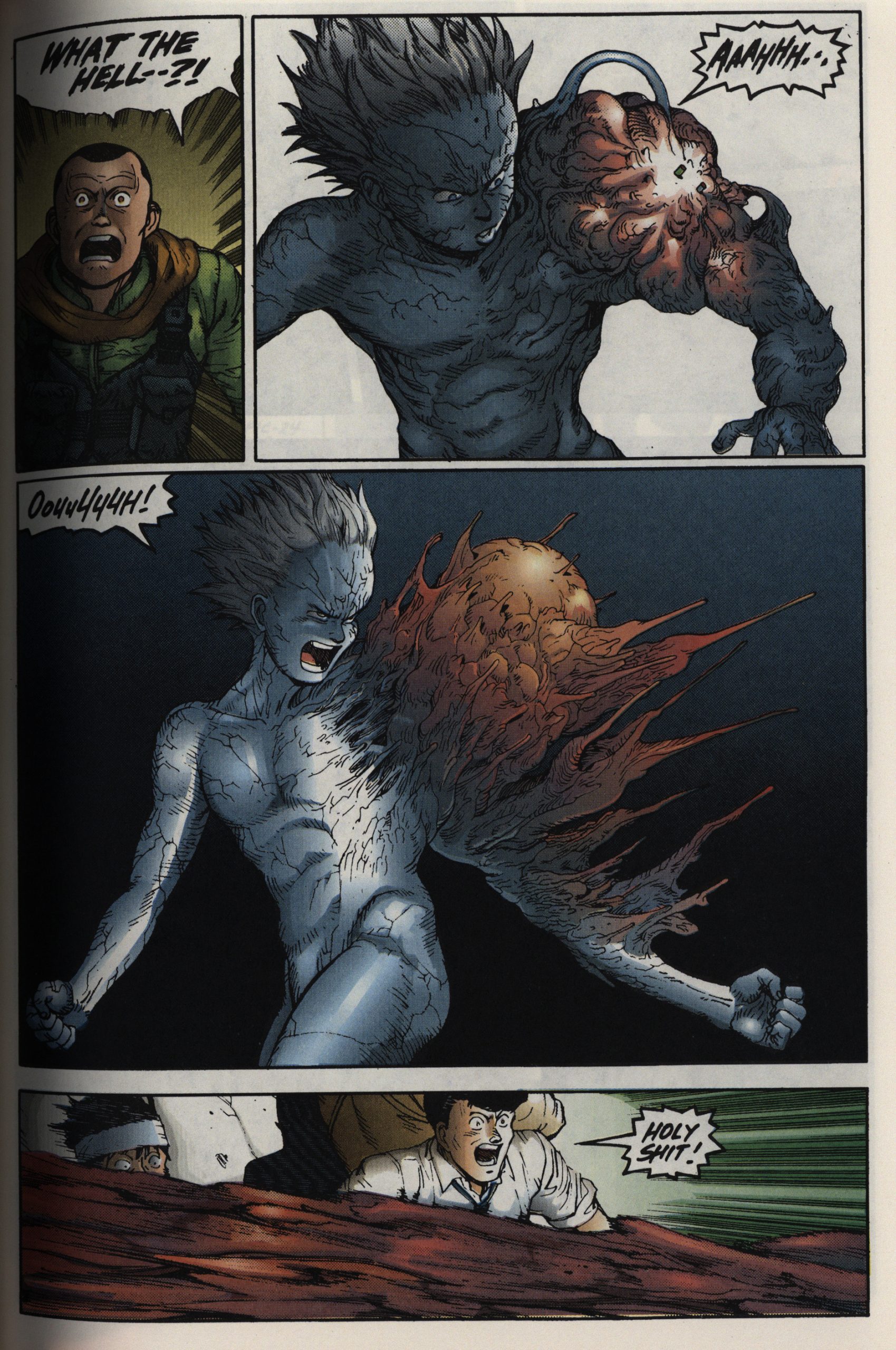
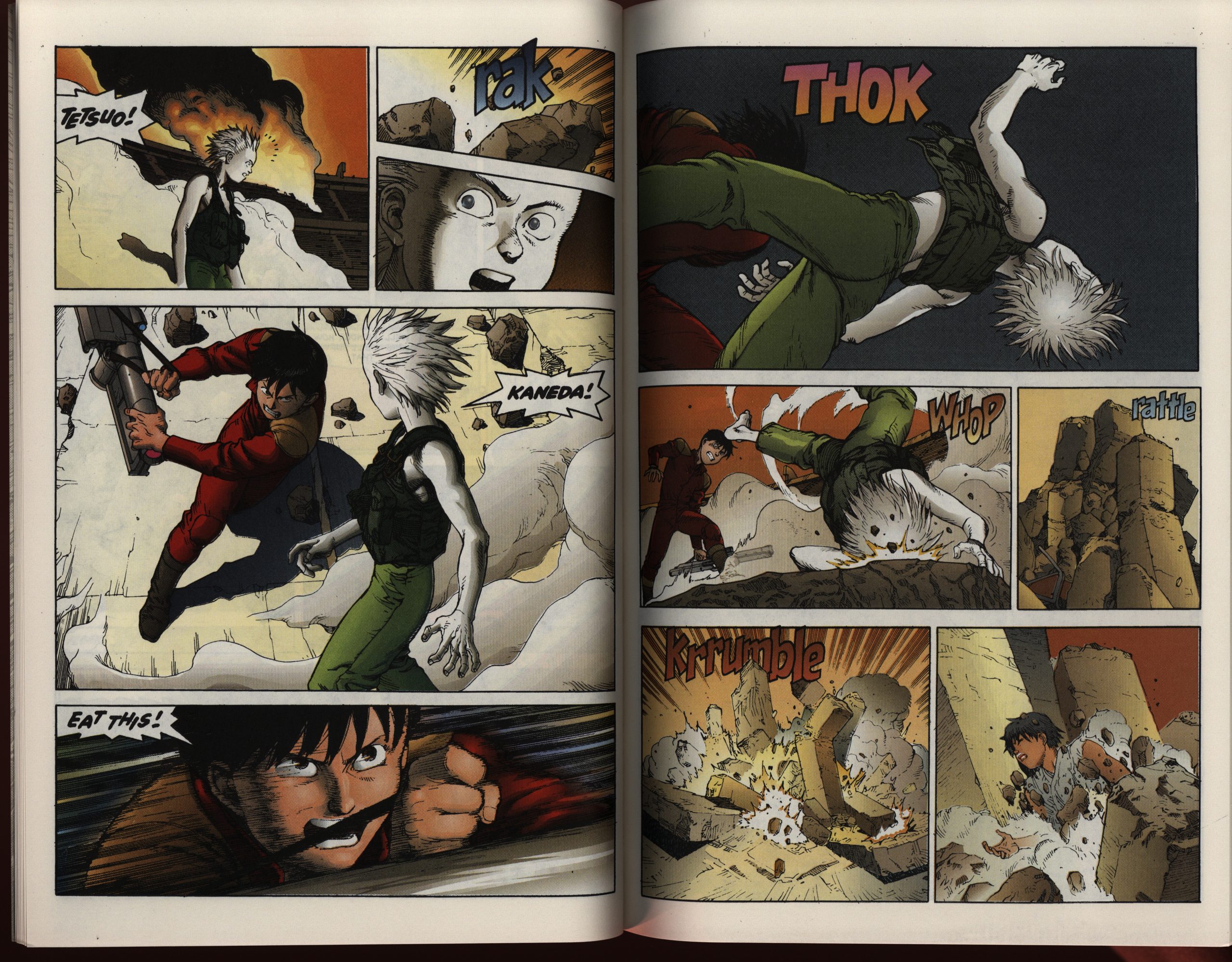
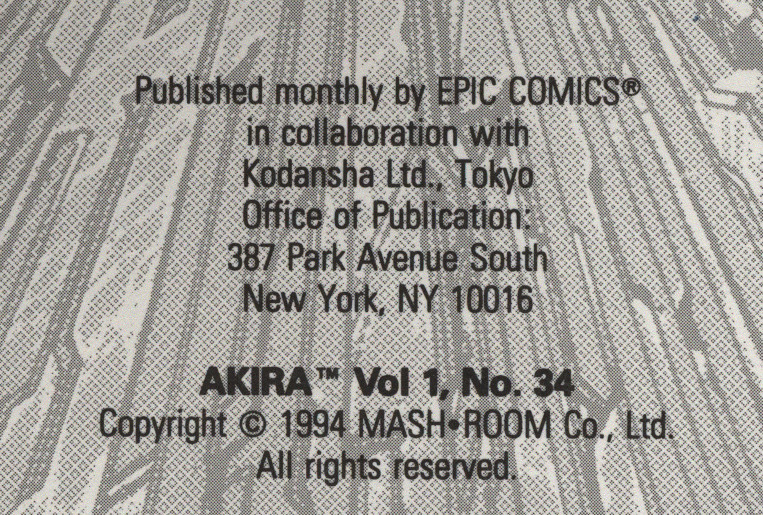
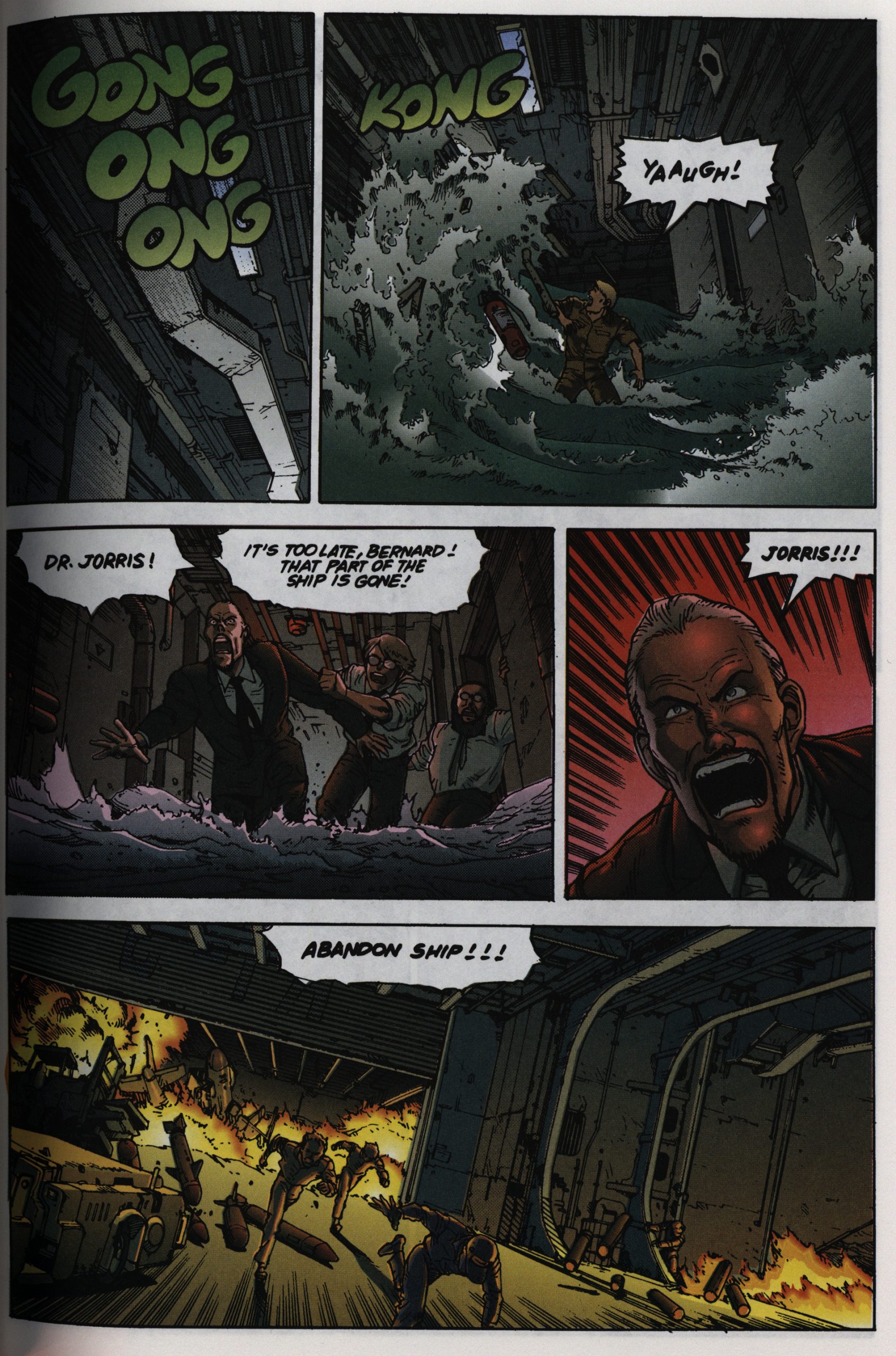






“I was rather worries that Otomo wouldn’t stake the landing of Akira, but it did have a pretty satisfactory ending.”
Were you really worried? That’s… interesting…
I considered recaps optional reading for those who were either new to the story or were reading many other books and simply couldn’t keep track of Akira’s sprawling storyline. I recall several instances of the book shipping late, and the recaps helped mitigate those long pauses that robbed the story of momentum.